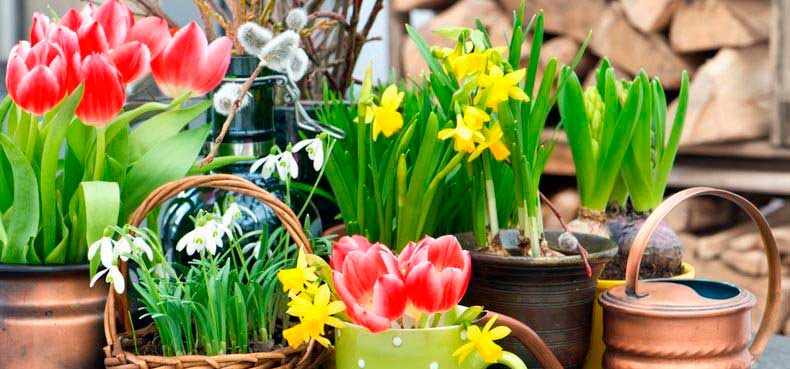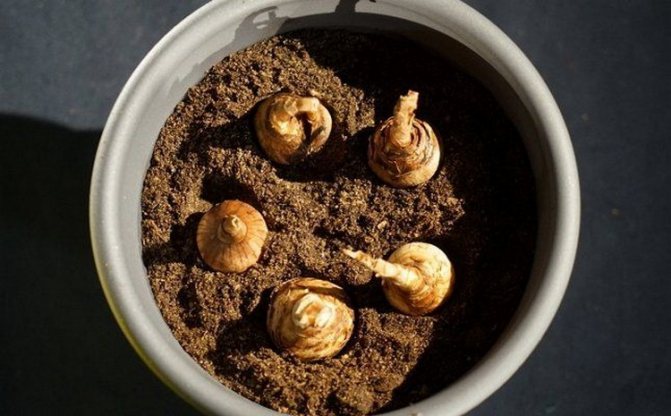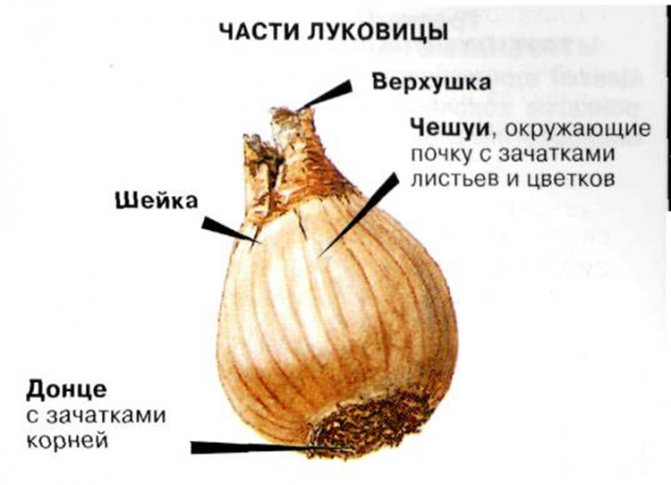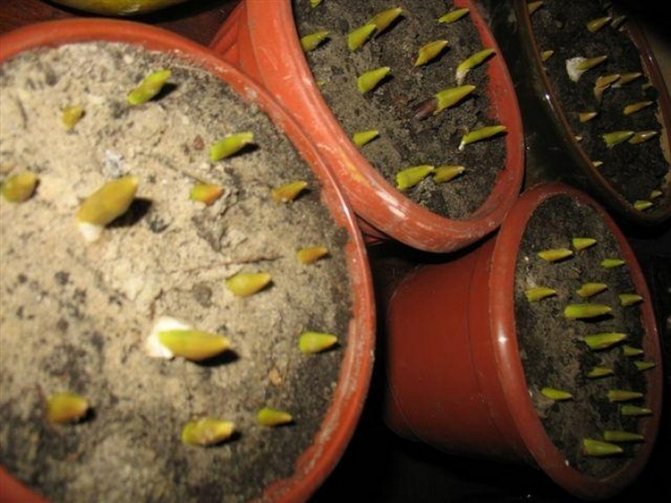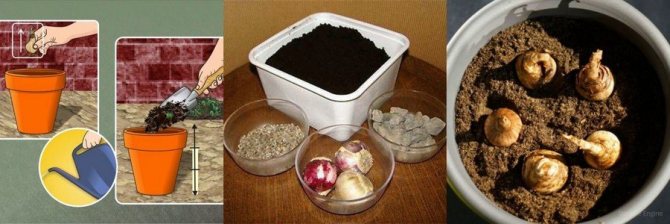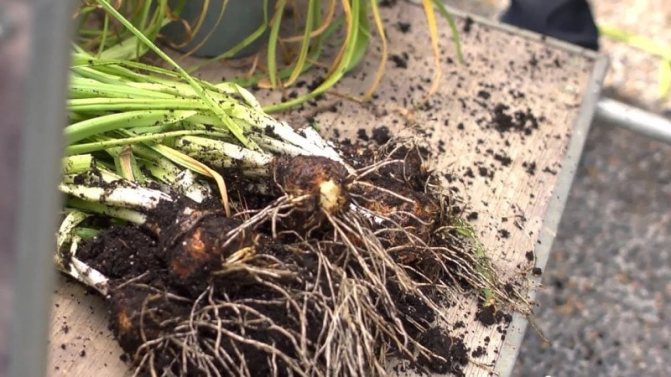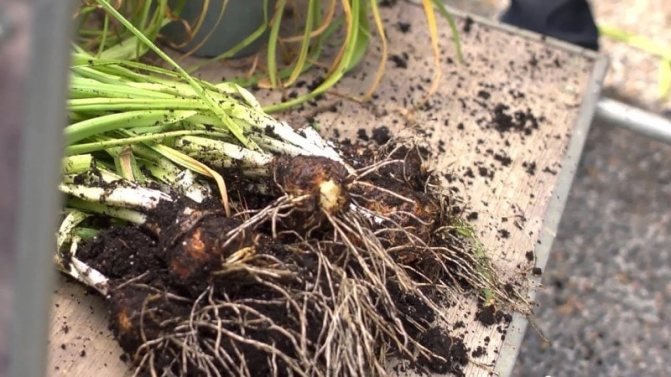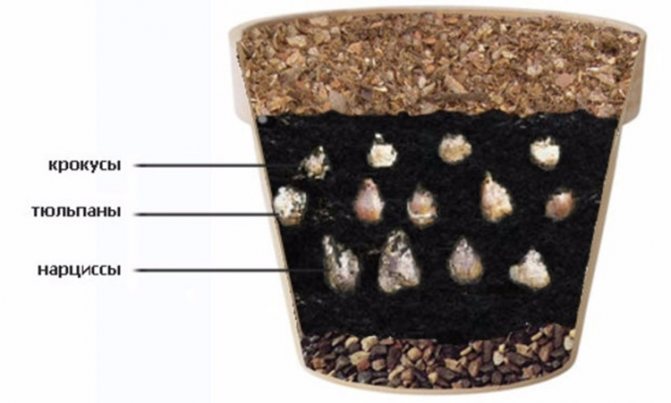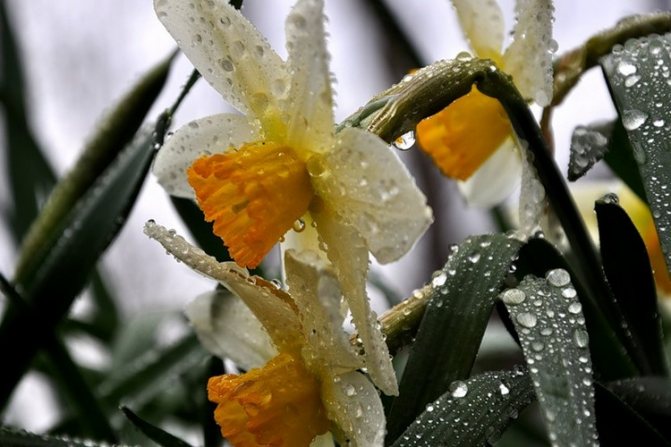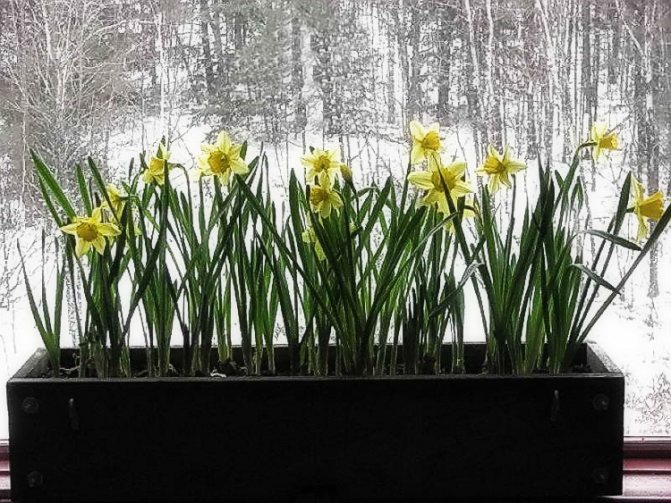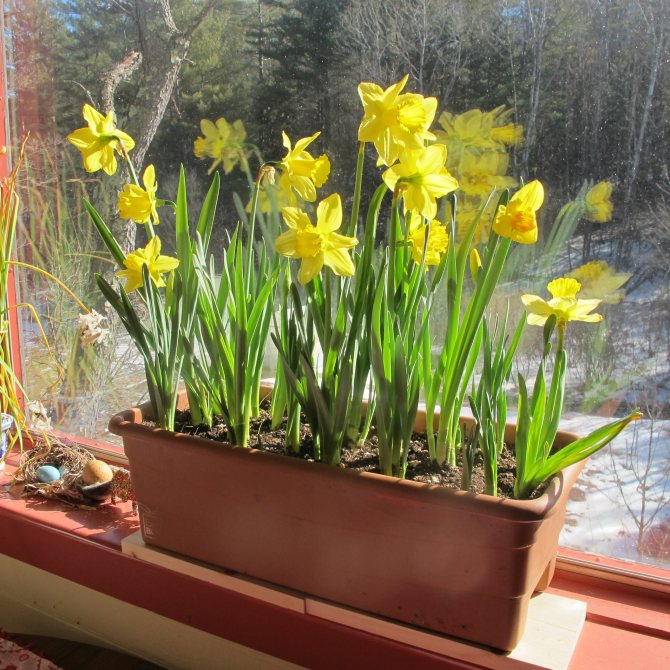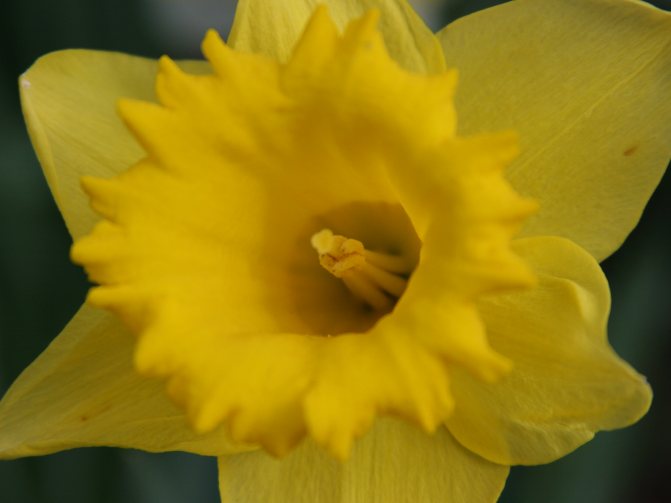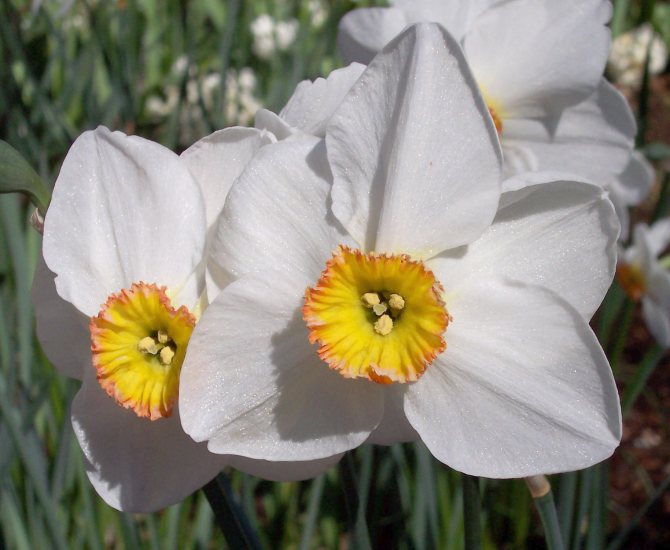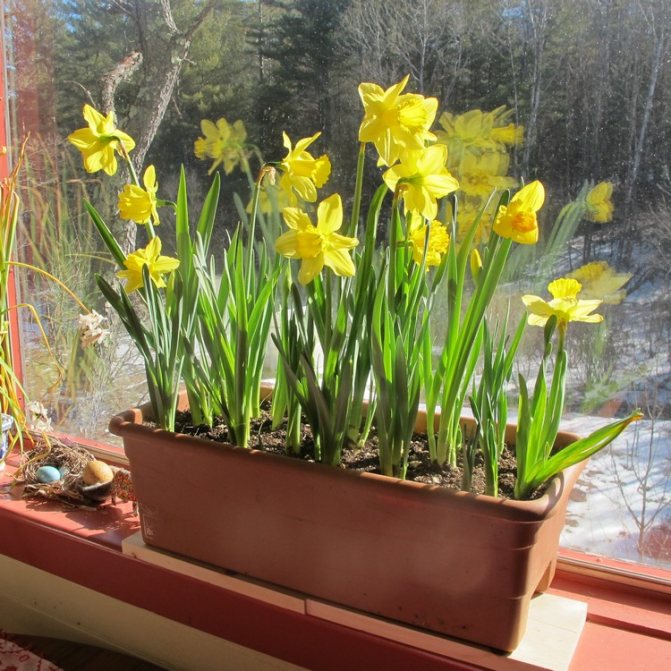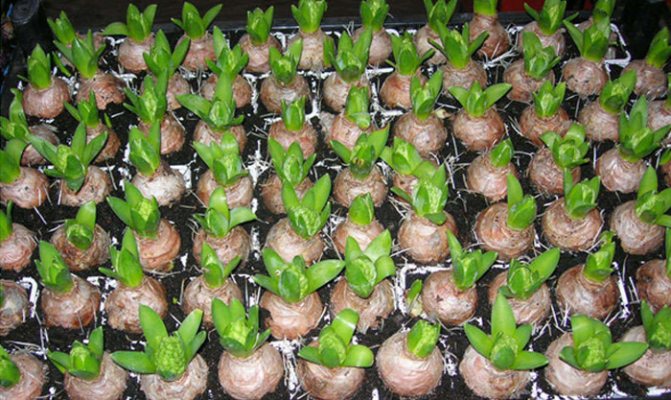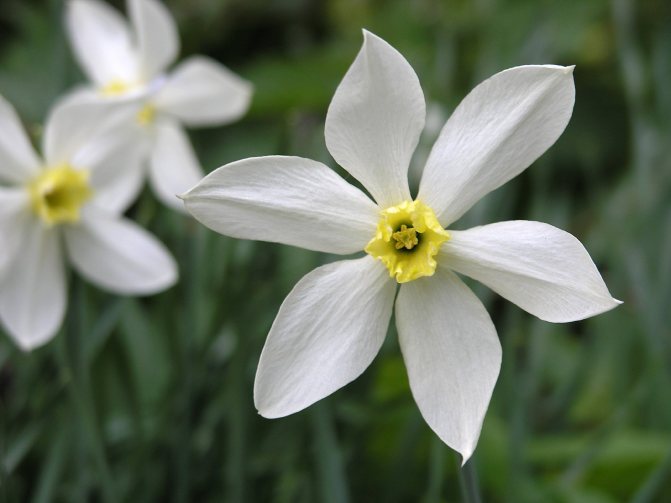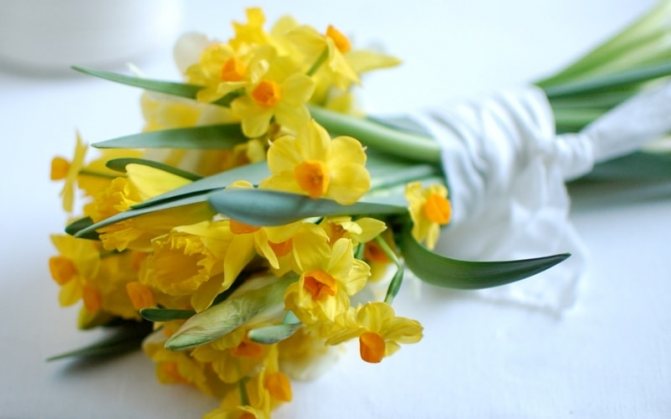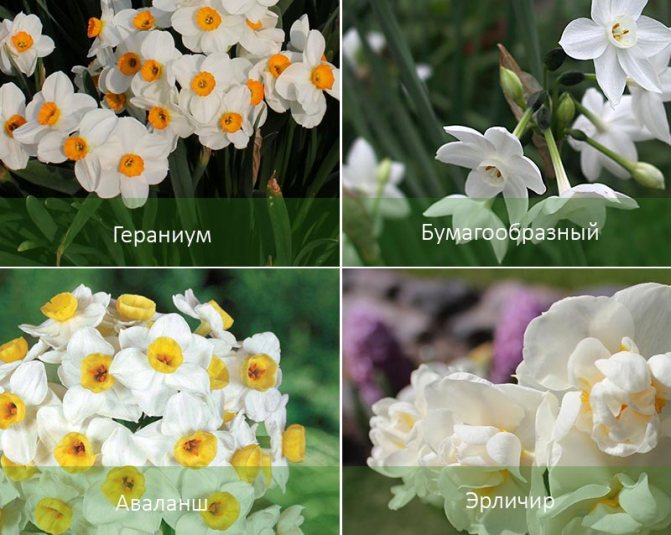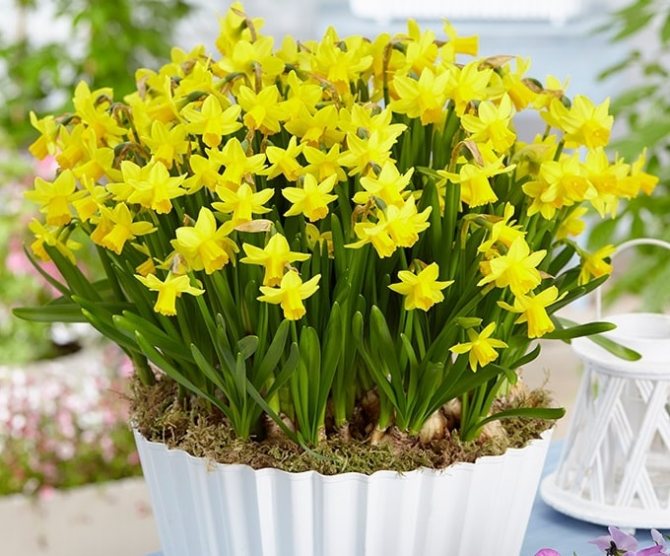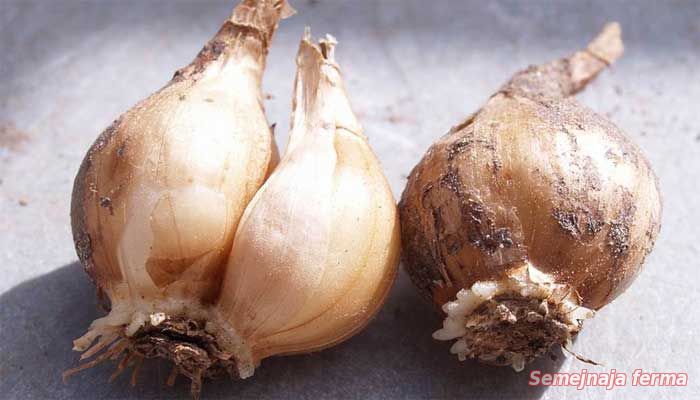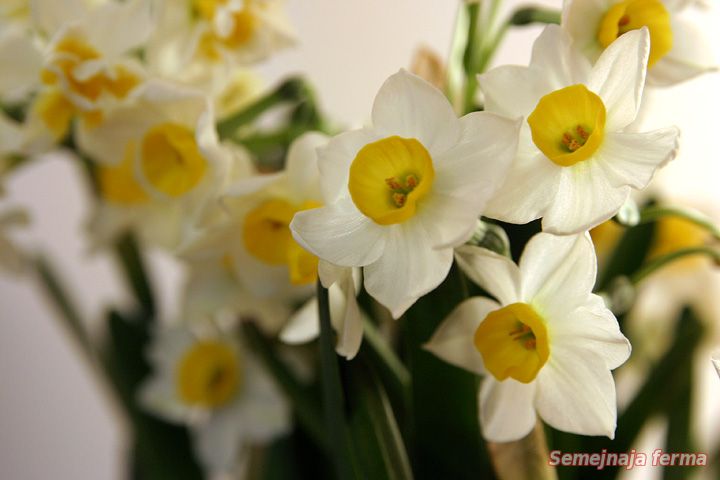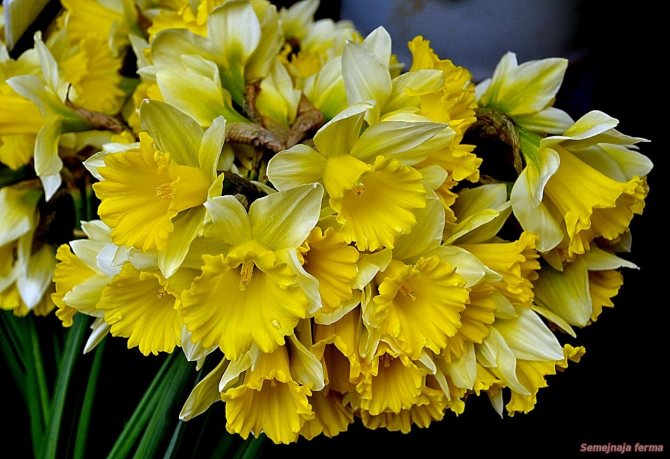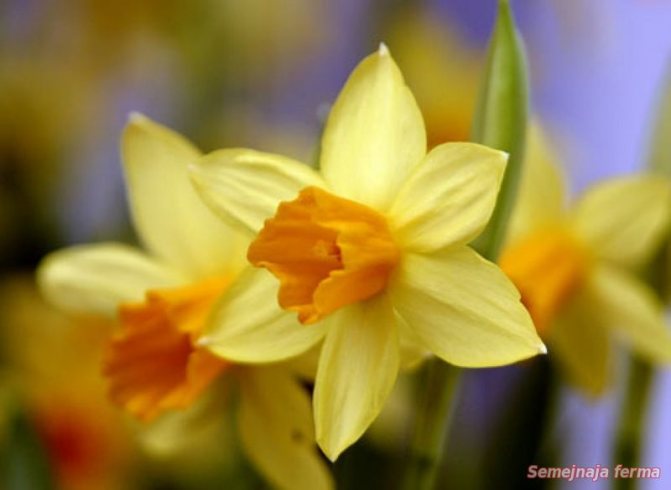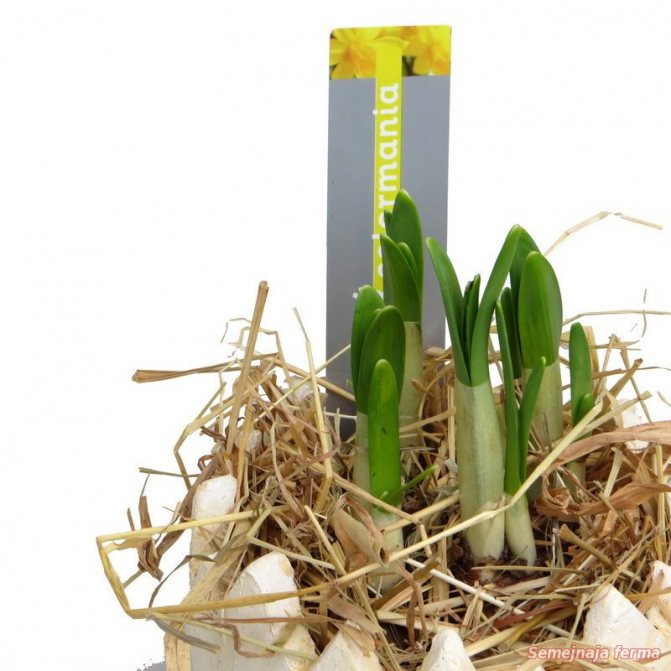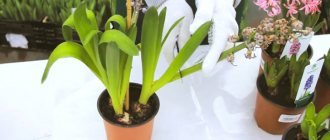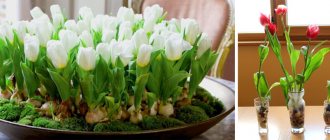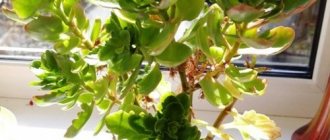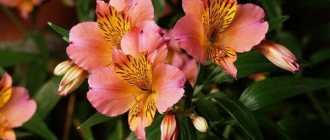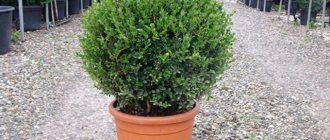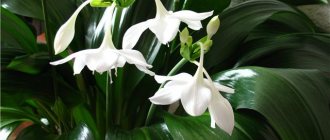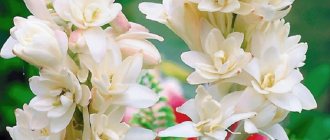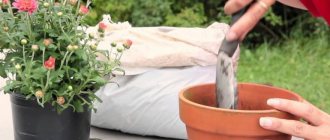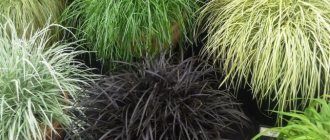Narcissus is a flower that symbolizes beauty. Inside its pale white buds is a small red-orange crown. The plant has a delicate exquisite stem and exudes a tart "oriental" aroma. The flower is propagated by bulbs. Therefore, proper care of daffodils after flowering will preserve and increase the population of this plant. Today, these flowers are grown not only to decorate flower beds and landscapes, but also as a pot culture at home.
Daffodil flowers. Care
The soil
Due to the fact that this plant is unpretentious, absolutely any garden land can be used for its cultivation. The flower feels great both in the sun and in the shade. It can grow well even on heavy soil fertilized with humus. The only thing that should be avoided when planting a plant is moist soils, where water stagnates for a long time in the off-season. It is very important to prepare the ground in advance. About a month before planting flowers, it should be dug up. And of course, don't forget to fertilize.
Landing
Planting the plant is best in early fall or late summer. Bulbs should be placed about 12-15 cm deep, from which daffodils will subsequently appear. The planting site must be well watered. Caring for daffodils after flowering involves digging them out of the ground. Therefore, depending on when you plan to remove the bulbs, a certain distance should be observed when planting the plants. If after a year or two, then the seeds are recommended to be placed at a distance of 10 cm from each other. If you want to get a fairly large number of "babies", plant flowers in such a way that the gaps between them are at least 20 cm.
Fertilizer
Caring for daffodils after flowering, as well as during their active growth, involves the mandatory feeding of plants. Fertilizers are recommended to be applied during the bud formation period. For these purposes, it is best suited.You can also use nitrophosphoric and it should be borne in mind that the flowers do not tolerate high acidity.
Caring for daffodils after flowering
After the buds begin to wilt, they must be carefully cut, not allowing the seeds to set. When the leaves of the plant turn yellow, you can dig up the bulbs. To protect them from disease, it is recommended that they be treated with fungicides before storage. Then the bulbs should be dried and placed in a cool dry place.
Homemade daffodil. Care
When planting in a pot, the bulb should be placed so that 1/3 of it is on the surface. After that, the plant must be watered. Then the pot with the bulb must be placed in a dark place, the temperature in which does not exceed +5 degrees. Once the daffodil sprouts, it can be moved to a regular room. With regular watering, the flower will soon show its first buds. Next year, in the fall, the dug out bulbs can be planted in open ground. As a rule, they are no longer used for growing in a pot.
We have already figured out the choice of capacity and soil, now we will decide on how to plant daffodils correctly. Drainage (small pebbles, pebbles) must be placed on the bottom of the pot with a layer of about three fingers. This will provide better oxygen circulation and the ability to remove excess water during irrigation.Next, the container is filled to the edge with soil. The bulbs are placed on top and pressed lightly into the soil. The top of the planting material should protrude slightly beyond the edge of the pot.
The number of bulbs placed in a pot depends on the size of the pot. For example, in a container with a diameter of 9 cm, you can place three onions measuring 10-11 cm. In no case should the bulbs be allowed to stick together. After planting, the soil is watered with water. You do not need to fill the pot, otherwise the planting material will rot or start to hurt. In order for the bulbs to take root, the containers are placed in a cool (from +8 to +3 degrees), dark place for three months. Then they are transferred to the room.
Planting time depends on the desired flowering period: if it is necessary for the plant to bloom by winter, they are planted in early September, if by spring - at the end of November or early December. In order not to miscalculate, read the description of the variety, how long it takes for the plant to root and prepare for flowering.
Planting and transplanting
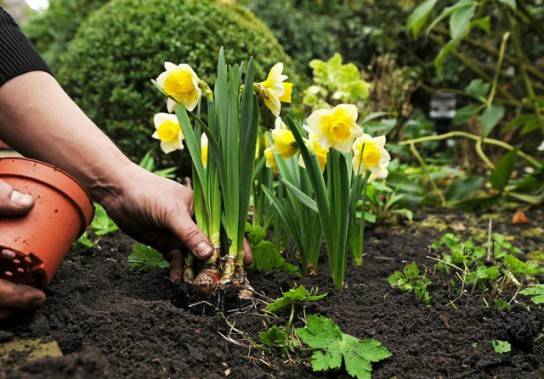
As mentioned above, daffodils are quite unpretentious flowers. They are able to bloom profusely in one place for 5 years, and sometimes more. Transplanting flowers is necessary only when the flowering weakens and the bulbs become cramped in the soil.
It is best to transplant daffodils in the summer (late July - early August). During this period, the plant loses its roots, so the transplanting process will be easy and without any problems.
For the transplanting process, you first need to carefully dig up the bulbs of the plant, and then divide and sort the nests of the bulbs. If you do not plan to replant them immediately, the bulbs should be dried well in the shade and stored in a separate place for future planting. Please note that if young roots have already appeared on them, disembarkation should be carried out as soon as possible.
Daffodil bulbs are planted in late summer or early fall. In this case, you should take into account the climatic features of your region. The bulbs must take root before the first frost.
When planting a daffodil, you should pay attention to the following points:
- To protect the plant from diseases and pests, it is best to treat the bulbs with insecticides and fungicides before planting.
- For planting, it is best to choose places with good lighting, since the daffodil is a photophilous plant.
- It is recommended to add humus soil before planting in the hole. In addition, greenhouse or compost soil is also suitable for this purpose. It should be taken in a proportion of 1 tsp per onion. In addition, it is advisable to add 2 tbsp. l of wood ash, which will serve as a better rooting of the plant.
- The planting depth is 3 times the diameter of the plant bulb.
- When planting bulbs, leave a distance of 10 cm between them.
If you are afraid that the daffodil bulbs will not have time to take root before the first frost, then cover them with a special covering material that will keep them warm.
Protection against diseases, pests
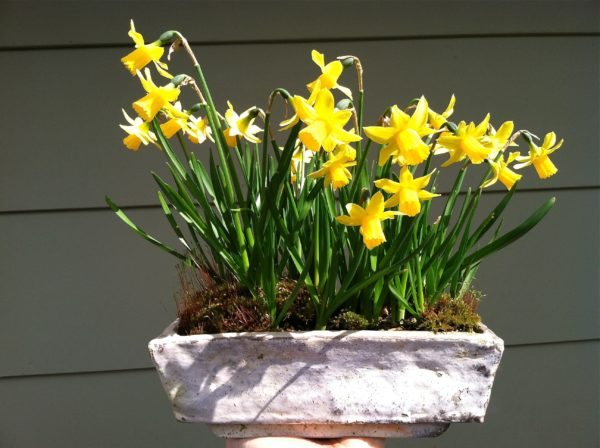

Most often indoor daffodils suffer from fungal diseases. A similar attack happens due to waterlogging, the content of the bulbs during storage in warmth and humidity. The main measure for preventing fungal diseases is preventive spraying of bulbs with fungicides, as well as proper care of the plant.
Of the insects, daffodils are most often affected by ticks, bulb flies and nematodes. Usually, infection occurs through insufficiently disinfected soil. It is especially dangerous to take garden soil and not sanitize it, immediately using it for planting. If pests are bred, it is necessary to use insecticides to destroy them.
We learned how daffodils are grown at home. As you can see, these unpretentious plants can bloom and develop quite safely even in greenhouses.Observing simple care measures, you can easily get healthy, actively blooming daffodils on the windowsill at home.
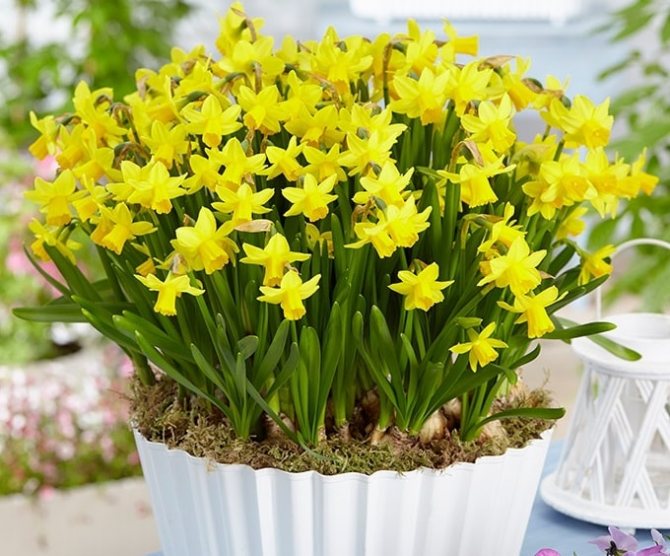

It is believed that daffodils are graceful and unpretentious flowers, decorating only garden plots. But this is not the case! Home conditions may well suit daffodils. You just need to know which plant varieties should be preferred, how to select the right bulbs and plant flowers in pots, how to care for them. So what do you need to know about daffodils growing at home?
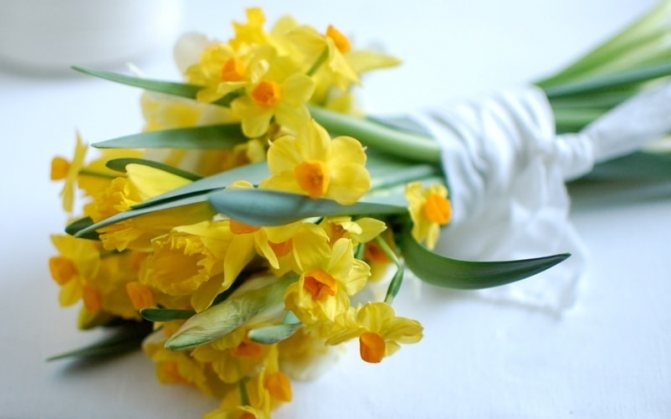

Pest control
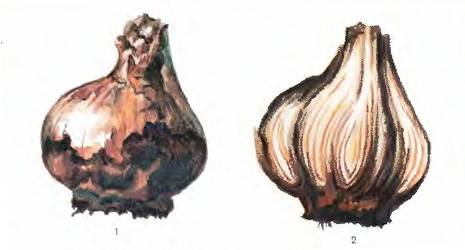

Another important point in caring for daffodils is protecting the plant from pests. A particular danger to the flower is the daffodil fly. There are many different drugs to protect against it. The most effective and reliable of these is Intavir. The plant is treated with it 3 times: before flowering, during the growth period and during flowering.
Plant care
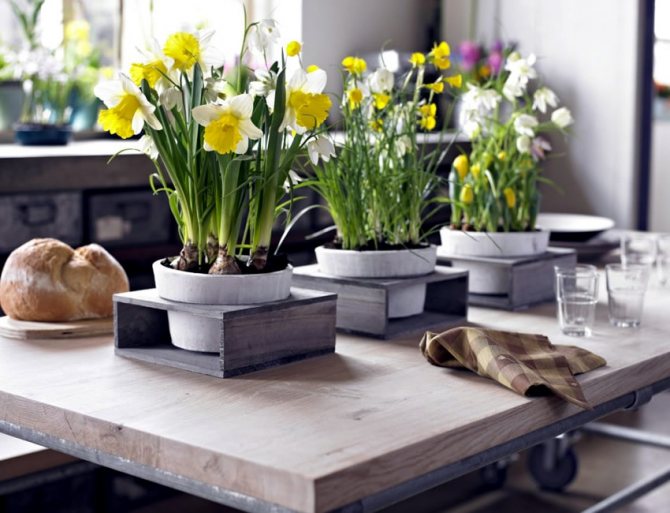

Daffodils grown at home as potted crops are easy to care for. One has only to take into account some recommendations, and beautiful daffodils will delight households and all guests, for example, for the Women's Day on March 8. First of all, you should not place the container with the plant on the windowsill close to other flowers. The fact is that daffodils contain substances with toxic properties that can negatively affect the weak roots of capricious plants in care.
Watering daffodils is necessary immediately after planting. During the rooting of the plant, moderate watering is carried out 1 time within 2 weeks. When the container with daffodil will stand in the room on the windowsill, more frequent watering is possible, depending on the drying out of the soil. When watering, it is better to use not cold water and pour it into the pan. During the flowering period, the plant is watered more often, at the end of the period - less often. Watering the daffodil is stopped when the leaves turn yellow.
For better adaptation to home conditions, which consists in rooting and flowering plants, daffodils require feeding with nitrogen-potassium fertilizers. Initially, feeding is done when shoots form, then when buds appear, once every 2 weeks. During the flowering of the plant, fertilizer does not need to be applied. It is important to remember that when flowers appear, the daffodil needs cooler temperature conditions (10-12 ° C) to extend the flowering period, which will last up to 3 weeks.
Breeding features
The main breeding method for daffodils is by bulbs. You can either divide them into nests or cut a whole onion. The second option is relevant if you have special or rare varieties of flowers. It is carried out as follows:
- The onion is cut into about 5 parts, each of which should be treated with a special preparation that stimulates the growth and development of the root system.
- The cut parts are well dried and planted in a tub with soil, which has been previously sterilized and steamed.
Please note that when propagating daffodils by cutting the bulb into several parts of flowering, you will have to wait about 3 years. If you are a novice florist and you have an ordinary, and not a valuable, variety of a flower, you should not resort to this method of propagation, so as not to risk it again.
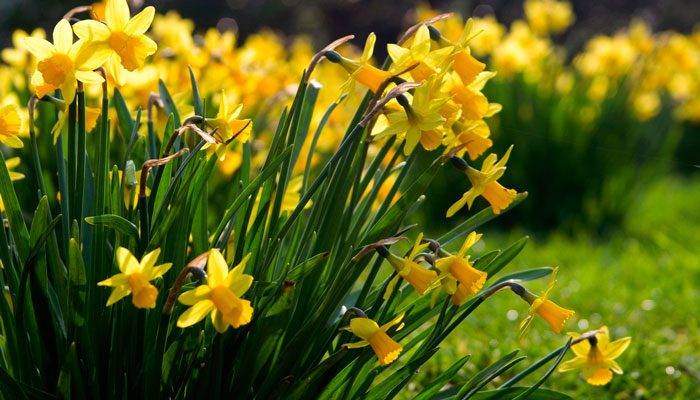

Planting a flower indoors
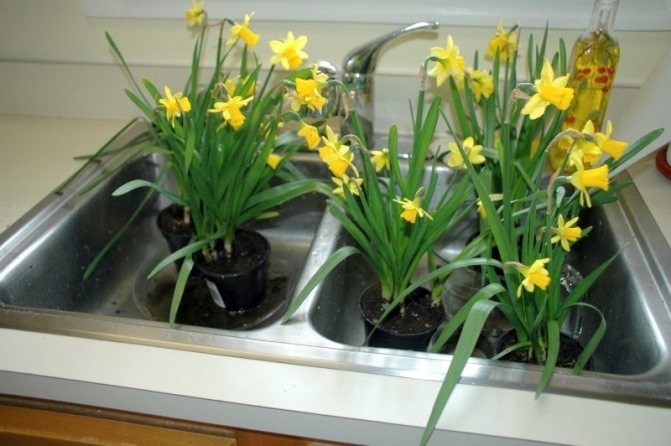

Drainage is placed in the lower part of the pot, which can consist of small pebbles (pebbles), poured 2-3 cm high. Drainage is needed to maximize oxygen advance and remove excess moisture after watering the plant. Earth is poured onto the drainage to the top of the pot. The bulbs are planted by pressing slightly into the ground, while the top of the bulb should rise above the ground.
Choosing a place for planting daffodils
Daffodils, due to their beauty and delicate color, are in demand not only in the beds and flower beds of gardeners, but also in
decoration of interiors, landscapes, hanging flower beds, lawns. Daffodils get along well in flower beds with other bulbous cultivated flowers. In order for daffodils to bloom well and are pleasing to the eye, for their planting, it is necessary to select a site that is sufficiently illuminated, calm and well-drained. Daffodils do not like the scorching sun, it can destroy a delicate flower, take this into account when planting and choose places with variable shade.
What kind of daffodils should you grow at home?
Daffodils can easily adapt to home living conditions, be in pots and delight the inhabitants of the house with wonderful flowers for a long period from winter to spring. But for this you need to know what varieties of daffodils can grow at home. More often than other varieties for indoor conditions, the following varieties are chosen:
- Papery;
- Small pearl;
- Avalanche;
- February gold;
- Ziva;
- Snowball.
Daffodils are also grown at home: "Erlichir", "Verge" or "Geranium".
The most undemanding to the conditions of detention are "Avalansh", "Paper-like", "Ziva". They are also characterized by the longest flowering. Flowers of plants can be colored in various tones: yellow, white, cream, beige. The Avalanche variety, for example, is characterized by the presence of white petals and a yellow heart. "Erlichir" stands out for its peculiar velvety structure of flowers. Daffodils of different varieties can vary in size.
Preparing the soil for daffodils
Light soils with good aeration are considered the best for planting daffodils. Loam and sandy loam soil are also suitable. However, if you see that the soil on the site is heavy, enrich it with peat bog, add half a bucket of sand per square meter, dig it up, and then level it. Additional enrichment of the soil with a mineral complex will have an excellent effect on the vegetation of plants. Do not be upset if your soil does not meet the stated requirements, it can be artificially made usable. Add sand and peat to clay soils, enrich the sandstones with chernozem and fertilizer, and move chernozem with chopped straw and river sand in a 2: 1 ratio. Too acidic soil can be limed by adding lime or wood ash.
It is very convenient to grow daffodils in high beds, for this, prepare a soil consisting of black soil, peat, river sand, add rotted manure to the mixture (namely, well-rotted manure, with an aging of about five years, because fresh humus can burn the root system of the bulb) ... Form high beds from the resulting mixture, or pour prepared soil into specially prepared ground pallets knocked down from boards. Add mineral dressing: potassium, phosphorus in a tablespoon per square meter of soil, mix, level.
It is better to plant bulbs from August to October; you must calculate the exact time of planting yourself, since it will depend on your climatic latitudes. It takes a month for a daffodil to take root well, so this must also be taken into account when planting the bulb. The root system of the flower should anchor well enough in the ground, before the frost begins.
Daffodil: suitable varieties for growing at home
Daffodils can take root well in your home in pots and delight with beautiful flowers from December to March. However, not all plant varieties are suitable for growing at home. The most suitable varieties for planting in indoor pots are:
- Avalanche.
- Paper.
- Inbal.
- Ziva.
- Magnet.
- Grand Soleil d'Or.
- Erlichir.
All varieties, except for Magnet and Grand Soleil d'Or, can have three color options: beige, cream, white. The first two representatives exist only in yellow colors. Avalanche flowers have a yellow center and white petals, and Erlichir differs from others in an interesting shape of flowers, which looks like velvet. The most unpretentious and long-flowering are Avalanche, Paper and Ziva.
Planting daffodils correctly
into account, the size of the bulbs themselves. The bulbs are planted to a depth of 13 centimeters (heavy soils, warm climate) and up to (26 centimeters, light soils, cold climates). Plant the bulbs so that freezing soil does not touch them, and the groundwater does not wash away the root system. Therefore, it is so important, when planting, to take into account all the positive and negative factors in the complex. Leave a distance between the rows of about half a meter, for convenience when caring for plantings. To get large children, daffodils are planted at a closer distance to each other, and at a smaller embedment in the ground.
To prevent your flowers from freezing, the soil after planting can be mulched using peat mixed with humus and straw. And when the first frosts come, the flowerbed with plantings can additionally be covered with straw or dry grass, but in early spring, the mulch is removed so that the plant can start growing without obstacles.
Selection of bulbs for growing
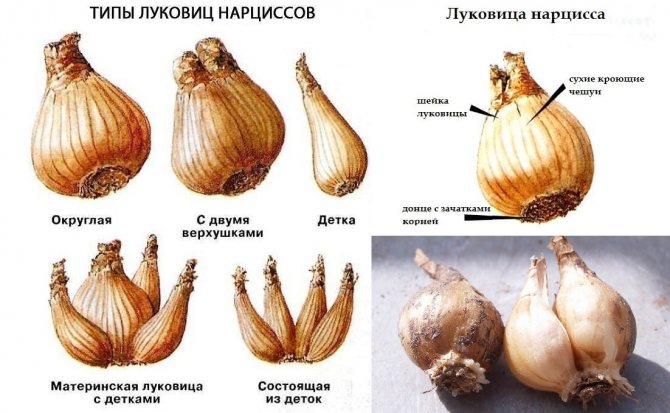

In order for the plant to quickly and easily adapt to indoor conditions, it is necessary to select large, hard bulbs for planting. They should be free from defects: dark spots, scratches, holes, rot. It is better to plant the purchased flower bulbs for indoor cultivation immediately in pots. If the bulbs need to be stored somewhere before planting, then for this they choose a ventilated room where it is dry and warm, since in a damp and cool place the bulbs can take root ahead of time or be attacked by a fungus.
Outdoor Daffodil Care
Irrigation rates and soil aeration
In early spring, if the winter was little snow, daffodils will need regular and abundant watering. As soon as the plant begins to grow intensively, watering does not stop, but also loosens the soil, for better absorption of moisture by the flower and to prevent the formation of an earth crust. The main rule for watering should be that after the end of flowering, the plant also needs an increased supply of moisture for the normal process of bulb reproduction. Do not forget to weed the weeds between the rows, because the weed is not a companion to a cultivated plant.
Apply fertilizer by growing season
When the first signs of daffodil growth appear, you can start feeding with complex specialized fertilizers, following the instructions. the next saturation of the soil must be carried out during budding, for this a superphosphate solution is used, with the addition of potassium and urea per tablespoon per bucket of water. The next feeding is carried out after the end of flowering, for the full formation of new plant bulbs. Root dressing is applied with a phosphorus-potassium solution, or with ready-made liquid fertilizers, but you can also apply granular fertilizers, which, when irrigated, will enrich the soil themselves. Choose any method of fertilization, the main thing is to feed on time.
How to plant a daffodil, basic requirements
Daffodils are unpretentious. However, in order for the plant to take root well and delight you for a long time with its enchanting flowering, it is necessary to adhere to certain planting and care rules. When performed, daffodil flowers can be admired from winter to mid-March. Sometimes there are complaints that the plant does not show any signs of illness and damage, but very little or no flowers. Most often, the reason for such troubles lies in the wrong approach to planting a plant.
How to choose a daffodil pot
The pot for planting daffodils should be short (about 15 cm), medium in width (from 10 to 13 cm). In one such pot, you can plant from two to four bulbs, depending on their size and variety.It is best if it is a clay or ceramic container.
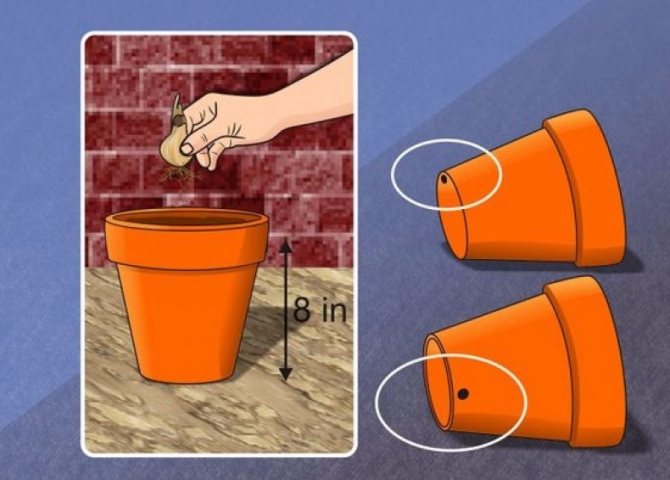

What should be the soil for planting a daffodil
Specialty daffodil primer can be purchased at flower shops. However, this plant will take root well in ordinary garden soil. In order for daffodils to bloom better, it is recommended to add a little sawdust, river sand or clay to the ground.
The ground should be soft and crumbly. If there are breasts in the soil, and soil particles begin to stick together, the soil will not receive enough oxygen, which will lead to fungal diseases of the plant. It is recommended to fertilize the soil with minerals or wood ash.
How to plant a daffodil correctly
We have already figured out the choice of capacity and soil, now we will decide on how to plant daffodils correctly. Drainage (small pebbles, pebbles) must be placed on the bottom of the pot with a layer of about three fingers. This will provide better oxygen circulation and the ability to remove excess water during irrigation. Next, the container is filled to the edge with soil. The bulbs are placed on top and pressed lightly into the soil. The top of the planting material should protrude slightly beyond the edge of the pot.
The number of bulbs placed in a pot depends on the size of the pot. For example, in a container with a diameter of 9 cm, you can place three onions measuring 10-11 cm. In no case should the bulbs be allowed to stick together. After planting, the soil is watered with water. You do not need to fill the pot, otherwise the planting material will rot or start to hurt. In order for the bulbs to take root, the containers are placed in a cool (from +8 to +3 degrees), dark place for three months. Then they are transferred to the room. Bulbs of varieties Ziva and Paper do not need a preliminary cold period, they can be placed on the windowsill immediately after planting.
Planting time depends on the desired flowering period: if it is necessary for the plant to bloom by winter, they are planted in early September, if by spring - at the end of November or early December. In order not to miscalculate, read the description of the variety, how long it takes for the plant to root and prepare for flowering.
Self-breeding daffodils
Reproduction of daffodils by seeds
Daffodils are bulbous plants that multiply in several ways, the main ones are vegetative and seed. The latter method is actively used by breeders to obtain new varieties of plants. For this, bulbs of different varieties are subjected to artificial pollination at the time of flowering to obtain a new hybrid. The seeds obtained in this way are sown in specially prepared containers and placed in a room with a temperature of at least 20 degrees, gradually, after two weeks, the temperature is reduced to 15 degrees. A bulb from seedlings begins to develop only in the second third year of life, therefore the process of propagation by seeds is very laborious and long.
Vegetative breeding method for daffodils
This method of reproduction is quite often used by gardeners, since with minimal labor costs, by the second year the mother bulb will give full-fledged children, ready for planting in open ground and independent existence. Depending on the variety, one bulb can give up to four babies, which will be ready for separation in the second third year. To artificially force the onion to begin dividing, it is dug up and not cut too deeply, stored in a cool, well-ventilated room. After two or three months, the bulb will give new babies, and it can be planted in the ground with them, and in the second year, new bulbs can be separated and planted on their own.
Reproduction using paired scales
This type of reproduction involves the selection of large bulbs, drying them, then cleaning from scales and roots.After, with a knife, it is necessary to divide the onion into six, eight parts, soak it in a fungicidal solution, dry it. Select paired scales and pack in a bag with perlite and maintain the incubation temperature at +21 degrees. In four months, if the operation to divide the scales was carried out correctly, the formation of new baby bulbs will begin. In autumn, when the formation of young bulbs is over, they can be separated from the scales and planted from pots, and when the bulbs grow up, planted in open ground.
Landing terms and rules
Daffodils at home have the following periods for distillation:
- early - for the New Year holidays (before the New Year);
- medium - in the period from February 1 to March 8;
- late - from April 1 to May 1.
No matter how difficult it is to guess, forcing daffodils by March 8 in the greenhouse is carried out on average. If early forcing is desired, then larger bulbs with a good supply of nutrients should be selected.
Such specimens should weigh 80 g.
Forcing technology is as follows:
- the bulbs are placed in a plastic bag before planting. In this form, they are stored at a temperature of + 5 ... + 9 ° C for 3.5 months. The planting material must be checked periodically so that it does not deteriorate. Watering the bulbs is done twice a week;
- they are transferred to a room with a humidity of 50% and a temperature of +17 ° C when shoots appear with a height of 10 cm;
- during the formation of flowers, the temperature drops to + 10 ... + 12 ° C.
In this way, the germination of the bulbs takes place before the appearance of peduncles.


When forcing these flowers, you should adhere to the following rules:
- the bulbs are planted in containers and left indoors until mid-November, until rooting occurs. In one box, you can plant about 6 kg of planting material;
- it is recommended to use peat substrates that retain moisture well;
- After planting, the bulbs are sprinkled on top with coarse river sand. Layer thickness - 2-3 cm;
- for the plants to bloom in March and April, the room temperature must be + 2 ° C. When landing for the New Year holidays, you need a temperature at around +9 ° C;
- planting must be regularly and thoroughly watered in order to minimize the percentage of rejects;
- plants do not need an additional ventilation system. It is enough to periodically open the doors and windows in the room.
By adhering to the above rules, several successful daffodils can be planted in one year.
Do I need to plant daffodils
When your daffodils begin to grow, and this time comes around the third year of their constant presence in the same place. They need to be seated, and this is done so that the buds do not shrink and the daffodils do not get sick. It is better to transplant daffodils after flowering, in summer or autumn, at least once every five years. When transplanting, bulb diseases can be detected at an early stage and prevented.
To plant the daffodils and not damage the bulbs, carefully dig up the flowers with the soil, and then divide the bulbs and plant them in new holes. It is better to dispose of diseased and weak plants, you will not get lush flowering from them.
In a new place chosen for planting daffodils, dig holes, prepare a soil mixture in advance from old rotted manure, peat and sand mixed with ash and superphosphate in small quantities. Place the flower with soil in the hole and sprinkle with the prepared mixture, lightly tamping the planted plant. After planting, water the daffodils abundantly and feed them with liquid fertilizers.
Selection and preparation of bulbs
Even the most capricious and quickly changing color in the ground daffodils (such as Professor Einstein, whose bright red crown instantly burns out in the sun) on the window perfectly retain their color.
Moreover, even miniature varieties with a low peduncle usually grow up to 30 cm when forcing, such flowers are quite suitable for bouquets.
Bulbs for flowering on the window are selected healthy, firm, heavy, with a whole and intact bottom. Each of them should have the following indicators: 2-3 peaks, a diameter of at least 5 cm, weight 70-80 g.
When forcing, multiflorous daffodils produce more flowers than in the summer in the garden
In July, the bulbs are dug up, dried, the largest ones are separated and, without tightening, they are planted in deep boxes. A film is laid on the bottom, then loose fertile soil is poured (half the height of the box) and the bulbs are laid out at a distance of 1-1.5 cm, slightly pressing.
They are covered with river sand and spilled with water so that the earth and sand will stick tightly to the bulbs. A layer of sawdust (10 cm) is poured on top and spilled again with water.
Digging up daffodils for storage
At the end of flowering, the gardener faces the question of digging out the bulbs for storage and transplanting, or the implementation of its preservation in the ground. Experienced gardeners say that capricious varieties of daffodils do not tolerate well when they are disturbed more than once every three years. Plants start to get sick and refuse to bloom. However, what about those varieties that grow too quickly? Or those varieties that do not give the desired reproductive result and are prone to frequent diseases? For this, daffodil bulbs are harvested. Digging them up, drying and treating them with fungicidal preparations will quite cope with dangerous diseases. And manipulations aimed at stimulating reproduction made with the bulb during storage will force it to give babies. So, digging is done after flowering, when the ground part of the plant dries up. Clean the dug out bulbs from the soil, dry in a well-ventilated room, without exposure to sunlight, sort and separate the children. Antiparasitic and fungicidal treatment is mandatory. Then the bulbs are dried again and stored in a darkened room at a temperature not higher than 17 degrees, until the next planting in open ground.
If you do not intend to dig up daffodils, and decide to leave them in the soil, provide them with watering. Remove dried stems and leaves. Organize weeding and provide aeration to the plants, add top dressing, because after flowering, the bulb will begin to form babies. There should be no weeds in your flower bed, their root system can harm the formation of children. For the winter, cover the flowers with a 15 cm layer of mulch.
How to care
Watering
The first time the flowers are watered immediately after planting. Water sparingly while rooting: twice a month should be sufficient.
After transferring plants from a cold room to a living room, watering is carried out as the soil dries out. As the daffodils begin to bloom, the frequency and volume of watering increases. At the end of flowering, they decrease again. When the leaves turn yellow, the moistening of the soil stops completely.
Use water at room temperature and separated. The best way to water is through the pallet.
Top dressing
For lush and long flowering, as well as good health, it is recommended to feed the indoor daffodil. Compositions with nitrogen and potassium should be used.
The first feeding is done when the shoots appear. The second - when buds appear, then every two weeks. During the flowering period, daffodils do not feed, however, as well as after the cessation of watering.
Pruning
The procedure is performed after the daffodils have faded. Dry buds are carefully cut, while the green part must first dry completely on its own. After the leaves and stems wither completely, they are cut with clean scissors at the root.
After flowering
After the final pruning, the pot with the bulbs remaining in the ground is placed in a cool and dark place.If the flower was sick in summer or was flooded with pests, it is better to get the onions out of the ground and examine them for rot and damage. Throw away the defective planting material immediately before it has infected the rest.
In winter, store the bulbs in a dry paper tight bag or a natural cloth bag. The bulbs dug out of the pot for the next year should be rooted in the open field. And for planting in a pot, you need to purchase the onions again.
How to properly distill daffodils
The method to achieve optimal early flowering of daffodils is called forcing. This technology will allow you to receive flowers by a certain date. Forcing is easiest to do in greenhouses, since temperature and humidity are important in this process. However, there are examples of successful distillation in pots.
To prepare the plant for distillation, it is necessary to prevent the plant from blooming; for this, the peduncles are cut off in the early stages. This is done so that the bulb has accumulated enough strength before forcing. Since the forcing technology itself will be stressful for the plant, because forcing will stimulate not only flowering processes, but also accelerate the growing season until new babies are formed.
One way to distill daffodils consists in preparing the bulbs. It is necessary to select healthy large bulbs and dry them for two weeks at a high temperature (+28 - 30 degrees). Then the temperature is gradually reduced to 17 degrees, the humidity is raised to 90%, and then placed in the refrigerator. It should be remembered that it is impossible to freeze the bulbs, the optimum temperature is considered to be at least +8 degrees.
Daffodils are planted no earlier than a month before the estimated time of flowering. The bulbs are planted either in a greenhouse or in pots with prepared soil. In the greenhouse, the planting of the bulbs is carried out as usual, the main thing is not to deepen the plant too much, it is considered optimal when, when planting for distillation, the top of the bulb rises above the ground. The temperature during forcing for the first week should not exceed + 10 degrees, and the subsequent increase to 18 degrees should take place gradually. In such conditions, the plant is kept until flowering. Caring for daffodils when forcing is no different from those growing outdoors. The main thing is not to expose the plant to high temperatures, otherwise the bud will crumble, and the active development of the leaves will begin to oppress the peduncle. Another trick is to lower the temperature by three to four degrees during flowering, this will prolong the life of the flower.
Another way to distill daffodils. This method differs little from the usual planting of daffodils, they are not stored in special conditions, they are not refrigerated. Two months before the desired flowering, the bulbs are planted in prepared boxes filled with sand and installed in a dark basement with high humidity. In such conditions, the bulb is activated and sprouts. After germination, the boxes are moved, and another well-lit room with a temperature not exceeding 17 degrees. And in a few weeks, flowers will delight you. The main thing is not to forget about regular watering and feeding, otherwise the bulb will deplete. If you want daffodils to bloom for a long time, keep the temperature at the same level, not exceeding the +11 degrees mark.
Landing features
We will learn how to properly plant daffodils in a room.
Bulb selection, preparation, timing
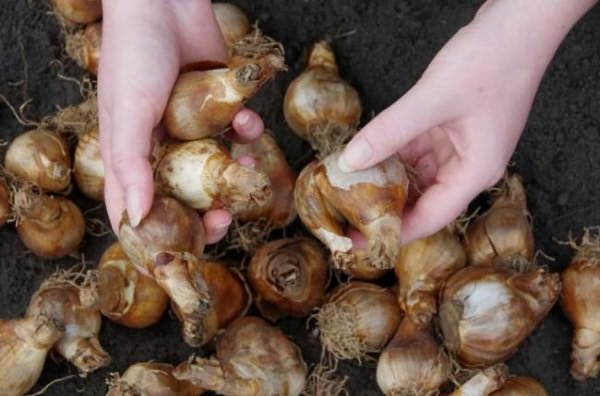

In order for the daffodil to take root well and please with long flowering, choose hard and rather large bulbs. There should be no damage, holes, spots, putrefactive areas on the planting material.
After purchasing the bulbs, it is recommended to plant them in the pots as soon as possible. Ideally, planting material should be purchased just before rooting.
There is still a need to store the bulbs before planting, place them in a dark, ventilated and dry place. It is not worth storing in a too warm and humid room, as the bulbs may start distilling ahead of time. Yes, and the defeat of the fungus in such conditions is not excluded.
Timing
The planting period of daffodils depends on when the owner plans to enjoy the flowering of the plants. If you want flowering to happen traditionally in winter, planting should be done in early September. If flowering is planned for spring, planting is done in November-December. The exact timing depends on the variety.
Process
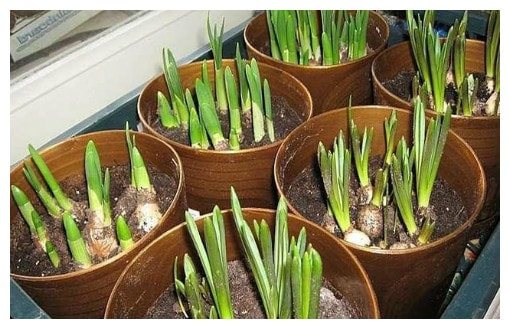

- Place drainage on the bottom of the selected container - small pebbles, pebbles, expanded clay with a layer of about 3 cm. Fill the container with the substrate.
- Place a few onions on top and press them a little into the soil. The onions should look a little over the edge of the pot. Each onion must be planted at a distance from the neighboring one - they must not be allowed to stick together.
- Pour water over the soil, avoiding flooding.
- Place the pot in a dark room with a temperature of + 3-8 degrees for three months to root the bulbs. Note that some varieties do not need a cold season (Ziva, Paper).
- At the end of the three-month period, the pot is transferred to the living room and proceeds to standard grooming procedures.
Features of cool distillation
Most varieties require rooting in a cool and dark place. Thus, a reliable imitation of open ground is created, where daffodils are genetically trained to grow.
Note that the normal development of the plant when rooting in an ordinary warm room should not be expected. Desired temperature range: + 3-9 degrees. During cool forcing, you should take care of the plantings: water a little, mulch with sawdust or foliage.
Growing daffodils in a pot
Daffodils can be grown not only in the open field, but also in pots, but also on your windowsill. To do this, you need to select plant bulbs that have proven themselves well. It is better to choose late-flowering varieties, as they will grow faster at room temperature. The bulb should be heavy and healthy.
For planting, a pot or other adapted container is prepared, which is filled with soil up to half, then the bulb is placed, so that the top shows from the soil by a third. Then the soil needs to be lightly tamped and watered. Then the containers with the planted bulbs are placed in a cool place or buried in the ground until sprouts appear. When the plant begins to germinate, the pots are brought into a well-lit room, avoiding direct sunlight on the flowers. The formation of a bud should be accompanied by an increase in temperature to +16 degrees.
Do not forget about caring for your plantings. Water the daffodils regularly, feed them. When the daffodil grows up, you should also take care of the stability of the pot. Thus, the flowering of daffodils can be observed on your own windowsill. After the flowers have faded, trim off the wilted leaves and continue watering so the bulb can finish its vegetative cycle with babies. After the bulb is dug out, dried, and another should be chosen in its place so that it blooms annually. Because last year's bulb is not suitable for re-forcing daffodils, but in the open field. It is capable of flowering and its normal growing cycle.
Should you buy discounted daffodils?
After the mass sale of distillation of daffodils by March 8, many unsold pots with fading bulbs remain in stores. Sellers are no longer interested in them, because the demand for these plants is falling rapidly. Many stores are announcing a sale and are dropping the price heavily. The time is coming when amateur flower growers can purchase good planting material at a low cost.
Daffodil Sale Begins
I have bought such "expired" daffodils several times. Further care for them is determined by the condition of the plants. Well-preserved daffodils can be grown prior to planting in the same way as good quality forcing. It is worth buying pots of dried daffodils only when they have a strong onion.
I immediately transfer to a larger pot, which I fill with a mixture of peat and sand. It turns out a kind of "buffer" that protects the bulbs from drying out. Then I slightly moisten the soil and take the containers with daffodils to the basement or to another cool place. There you can leave them until the beginning of autumn, when it is time for planting and transplanting bulbous plants. The soil must be moistened occasionally so that it does not dry out. Usually I plant such daffodil bulbs from the basement in flower beds for Indian summer. You can read about this wonderful time in my article. With this option, most of the bulbs are preserved well.
I believe that for many amateur flower growers, the purchase of even a discounted distillation of daffodils is a great chance to replenish their plant collections for very little money. Sometimes there are rare varieties on sale, the bulbs of which are expensive.
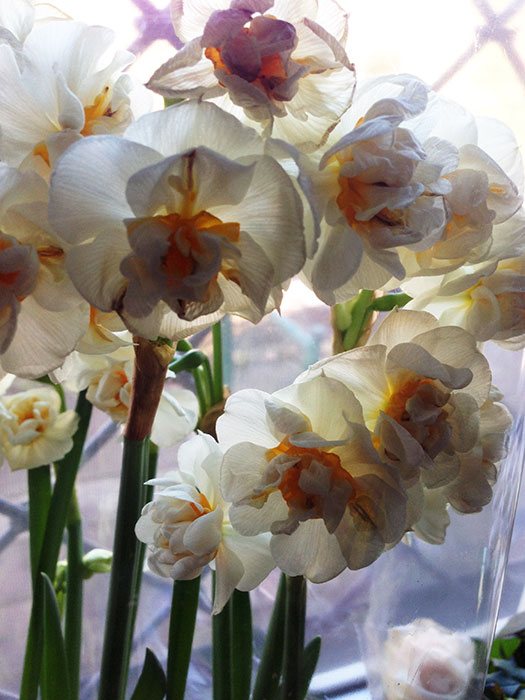

- In pots, for women's day, usually quot; expelled; special grade. I bought tulips and hyacinths, so they did not live to see the heat, the bulbs began to rot immediately after flowering. Try to dig up your bulbs, pickle against decay and dry them. Let them sleep as long as they can, and then, as it gets warm, bury them in the open ground. Maybe something will work out.
Daffodils are best planted in early September. To do this, you need to wait until the flowers and stem are dry, then cut the stem off the ground. Next, carefully dig up, separate the bulbs and clean well, but carefully, from the ground. Spread the bulbs in the fresh air (about an hour and a half) so that they dry out, turn over if necessary. When the bulbs are dry, they are folded into a net, hung away from direct sunlight and heating appliances and left until autumn. In autumn, we plant tubers in dug up and fertilized soil at a distance of 10-12 cm from each other, and to a depth of 10-15 cm. We cover the flowerbed with leaves or peat (for insulation) until spring. We remove the insulation in the spring.
Do not water the flowers and wait for them to dry. Then gently pull out the bulbs and remove the soil. It is necessary to plant in the ground at a depth of at least three bulb heights. Don't forget to add compost to the ground. In a year, your daffodils will bloom.
This must be done after the daffodils have faded and the foliage has all gone, usually in late summer in early autumn.
The bulbs must be dug up, being very careful not to harm or damage them. Separate one at a time, but too small will not bloom next year, try to choose more, you can throw away all the soft ones, they will not survive the winter.
Try not to delay the transplant, although the bulbs of this flower can be stored for quite a long time (several weeks), the most correct thing would be to transplant early. If you have problems and are unable to transplant, put everything in a paper bag and put it away in a cool room.
In principle, daffodil bulbs are buried in the ground in the fall, but if they are planted in the spring, then this year they will no longer bloom.
Only for their rooting will take a month and they are very fond of feeding with humus.
And to plant them in the ground, you need to divide them into separate bulbs, then add compost to the soil, then cover them with earth and cover.
Daffodils reproduce very well and form large nests, and in them it becomes very crowded for the bulbs. Therefore, you need to divide the onion into its children.
The bulbs of this plant must be planted deep into the ground, at least half a shovel's bayonet distance.
To transplant the daffodils into the soil from a flower pot, you need not water the daffodils for several days, then get them out and dry their root bulbs, but they should already be dry without watering, and put them in a cool place, then in the fall, plant them in the ground, sticking deeper and pour.
The flowers of daffodils, when they have bloomed, must be cut off, like the greens when they turn yellow. Remove the bulbs from the ground, clean the soil and put in the refrigerator. Then it will be possible to land them at the dacha in the ground. They will bloom in a year.
After the daffodils have bloomed, cut them back and stop watering. When the soil is dry, it can be easily removed from the pot. Then just remove the bulbs from the ground and put them in a dark, dry place, at the end of August, beginning of September they can be planted in open ground, you can first fertilize the ground and plant, sprinkle with earth, in the spring they will already be able to delight you with their flowering.
How to transplant daffodils from a pot into the ground: Reduce watering, wait for the greens to dry, then gently pull them out of the pot, cut off all dry leaves and dry, just not in the sun.
Store in a cool and dry place (in the refrigerator wrapped in newspaper until the end of September. Planting depth is approximately three times the height of the bulb.
Divide the nest of bulbs into bulbs. Small ones will bloom in a year. Add compost to the ground, and the place should not be low-lying, if a lot of moisture accumulates in the ground, then the daffodils can rot.
The bulb is planted three times the depth of the bulb.
It remains to cover with earth and cover with mulch.
Daffodils are bright and delicate garden daffodils that delight the gardener's eye from year to year. This flower is able to overwinter and bloom with renewed vigor in spring. But when the daffodils have faded, what to do next?
It is also equally important to rid the site of. It is advisable to fertilize the soil well with organic matter, for example, use a lot or rotted. After fertilizing the plot, respecting the depth to the bayonet.
Did you know?
Narcissus essential oil has long been used in perfumery. Its popularity was based on its gentle and intoxicating scent. Since the introduction of synthetic and cheaper flavors, daffodil is practically not used.
Landing scheme
To plant daffodil bulbs, you need to dig holes, the depth of each of them should be three times the diameter of the bulb itself. Compost is poured into the bottom of the hole, after which the onion is placed. The sharp tip of the bulb should always point upwards. After that, the hole is covered with earth and watered abundantly.
In the case when daffodils are planted in order to get many children, it is recommended to plant in an ordinary way, observing the distance between the holes of 15-20 cm.If the distance is less (10-12 cm), fewer children will be formed, but the bulbs will be larger.
This option is suitable for elite varieties of daffodils that are replanted every year. Also a good option for group planting of a plant is a "tight circle". So you can create a composition that looks like a beautiful blooming bouquet.
Follow-up care
Since caring for daffodils, especially at first, is very important, there are some important points to keep in mind. The soil must be regularly moistened and loosened. As a top dressing, mulch (peat or) or a layer can be used. You can also cover the area with a layer of dry foliage, this works especially well in snowless winters. In the spring, foliage is removed from the site.
The most common diseases of narcissists
In most cases, daffodils are affected by the disease due to non-compliance with agricultural standards when planting and growing flowers. The reasons may be high or low humidity during storage of bulbs, bulbs untreated with antiseptic preparations, high soil saturation with nitrogen,as well as insufficient lighting or its overabundance due to the detrimental effect of direct sunlight on daffodils. The most common diseases of narcissists
Common diseases among bulbous plants are fungal and viral diseases of different etiology. It can be fusarium, gray and brown rot, spotting, stem nematode, white striping.
To prevent plants from being affected by diseases, it is best to take preventive measures. To do this, you need to treat any planting material with fungicidal preparations intended for this. Storage of bulbs should be carried out in accordance with all norms and rules of agricultural technology. Obligatory weeding and the introduction of wood ash on the site will also not harm the flowers.
If you do find the first signs of the disease, dig up the flower and dispose of it to prevent the spread of infection to healthy plants. Treat nearby flowers with insecticides. It is better to treat the soil with carbation and add wood ash, three to four tablespoons per square meter.
In conclusion, I would like to note that daffodils are suitable for growing gardeners of any level, both beginners and experienced flower growers, due to their unpretentiousness. A variety of varieties will not leave you indifferent, and delicate flowers will decorate any holiday.
How to grow daffodils in a pot at home
Description
Narcissus is a spring flower: it pleases with its beauty one of the first after a long, dull winter. These flowers are good outdoors, but they can also look great at home in a pot.
Daffodils grow small, have white and yellow color, delicate petals and always dark green leaves. Their buds can be either of a simple structure or terry: the latter are the most decorative. Varieties with a two-tone yellow-white color have already been bred. More recently, there is also a variety that has a pink outer edge. The flowering period is from December to March.
Narcissus is a bulbous plant. Its peculiarity is the presence of two buds of renewal on the bulbs: each of these buds is at its own stage of development. Above, the bulbs are covered with a brownish skin, elongated in shape, pear-shaped.
Varieties
Today, the scientific botanical world has more than 30 different varieties of daffodils, most of which are suitable for home cultivation. Below is a small overview of the most popular varieties.
Paper
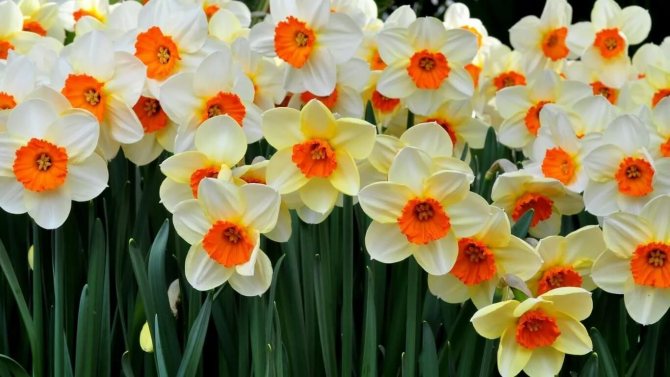

Probably the most popular indoor cultivar. The flower boasts many snow-white buds located on one straight peduncle.
Magnet
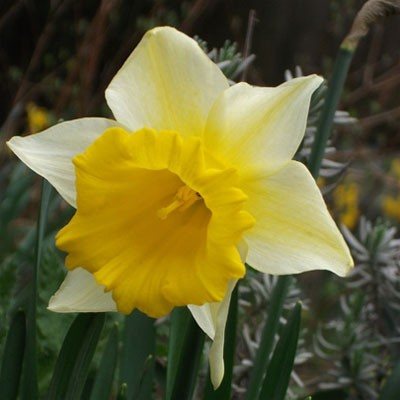

A wonderful yellow daffodil that can bring brightness and liveliness to the most dull interior.
Avalanche
An unusual-looking flower with two-colored petals: the middle of the bud is yellow, and the edges of the petals are white. Despite its exotic appearance, the variety is unpretentious.
Florists also praise the Little Pearl, February Gold and Snowball varieties.
Required soil
The soil for planting and replanting can be dug out in the garden or bought at the store. It should be soft, crumble in your hands and not stick together in lumps. It is better to dilute ordinary soil with sand or dry clay, add sawdust, wood ash and mineral fertilizers. This will make it loose, provide air circulation and enrich it with additional elements.
Some people use certain tricks to get flowers quickly, for example, so that they can give a bouquet for a holiday. To do this, they are planted in perlite or small stones, and watered abundantly. The bulbs have enough nutrients for the full development of the flower.
Which varieties are best for home growing
Daffodils have many varieties, which affects the color and structure of their flowers. Today there are more than 30 of them and many more breeding subspecies. Different varieties have leaves of different lengths and widths, but the color of the bushes is always rich dark green.
The flowers are yellow, white and recently hatched - a pale pink color of the crown. The structure of the petals can be smooth or terry. Since the flowers of daffodils are located on separate peduncles, pruning them does not cause any damage to the bulbs themselves.
The pear-shaped daffodil bulbs are very interesting. They have two renewing buds in their structure. Moreover, these kidneys have two completely different stages of difference. Roots grow best and most intensively in autumn. Their lifespan is about 11 months, after this period they die off.
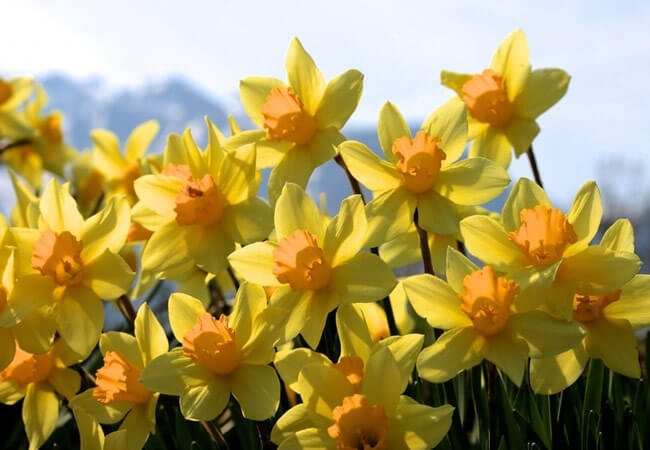

How to care for daffodils on your own
What specific varieties can we touch on? The most common are Fortune, Magnet, Yellowsun, Ziva, Inbal.
The Paper variety has become widespread. This daffodil has a large number of white flowers located on one peduncle.
Description of culture
Narcissus is a prominent representative of the amaryllis family. Refers to perennial bulbous plants.
Its leaves are basal, dark green in color, varying in length and width. The flower stamens are surrounded by a crown, different in shape, color and size (Figure 1). And the crown, in turn, is a tubular perianth. Flowers are simple or double, located on leafless peduncle stems. The bulbs are elongated, pear-shaped, their surface is covered with a dense brown skin. Two renewal buds are their characteristic feature. The root system of the plant develops in the fall and dies off every year.
Note: The crop blooms in early May and ends in June. Since the flower stalks are leafless, cutting flowers for a bouquet does not harm the bulbs.


Figure 1. Species diversity of daffodils
You should know that daffodils are more suitable for a warm enough, but not too lit place. Therefore, for growing at home, it will be preferable to choose east and west windows. In winter, it is better to leave the pots on windows with a south orientation.
These flowers can grow in any soil, but they prefer loams because they retain moisture well, and daffodils are a moisture-loving culture.
Classification of daffodils
Modern breeding offers 26,000 varieties of a variety of daffodils, which are classified into 13 groups, dividing them according to flower shape and origin. For distillation, tubular, large-crown, small-crown, double, split-crown daffodils are used.
Attention! Daffodils are considered the best for forcing.
To obtain flowering daffodils by a certain date, experts recommend using early and mid-early varieties, characterized by accelerated development:
- "Ice Folis" is a large-crowned variety with a flower measuring 7 cm. The color of the petals is white, the color of the crown is bright yellow;
- "Exsent" - large-crowned variety, flower diameter - 9 cm, color of petals is white, color of crown is orange-pink;
- "Edward Buxton" - small-crown variety, crown color - yellowish-green, flower size - 8 cm;
- Golden Harvest is a tubular variety that blooms with golden yellow flowers, up to 12 cm in diameter;
- "Birsheba" is a tubular variety with white flowers, has a mild aroma;
- "Irene Copland" - double variety, flower size - 8 cm, color - cream;
- "Jetfire" - cyclamen-like variety, bright yellow flowers, 7.5 cm in size;
- "Geranium" is a yellow-white tatsett variety, forms up to 5 flowers on one stem.
For forcing in a greenhouse, in addition to the listed varieties, you can use "Orange Wonder", "Scarlett Jam", "Raussillon", "Minnow", "Travertine", "Actea", "Grand Sole d'Or", "Lawrence Koster" and others ...
Advice! For forcing daffodils, you should use large, dense and absolutely healthy bulbs that are not damaged. Bulb size - from 4 cm and weight - over 60 g.
To get extra-class bulbs, you should carefully follow the conditions of daffodil agrotechnics, not allowing them to bloom. If the bulbs obtained at home do not meet the necessary requirements, they are purchased in specialized stores.
What to do with the bulbs after flowering
The flowers are cut off, the leaves of the faded plant, getting heavier, gradually dry out. This is the period when the bulb needs to be freed, cleaned from the ground, disinfected, dried. For storage, they can be put in bags and sprinkled with dry sand or peat. In this state, they can be stored until planting in open ground.
For forcing, the onion can only be used once.
Subject to all the recommendations, daffodils will delight you with long beautiful flowering at the scheduled time. Mistakes made when forcing a plant can upset the lack of flowering.
Adding an article to a new collection
Forcing bulbous plants is not only exciting, but also rewarding. You can even start your own flower business if you wish. But first, it's worth understanding the nuances!
By the end of summer, everything is ready for spring flowering in the bulbs of daffodils, in particular, microscopic leaves and buds are formed. But you can speed up the process and make the plant grow and bloom faster, for example, by the New Year or March 8th. The main thing is to create favorable conditions for development.
So, to start distilling daffodils, you will need:
- bulbs;
- containers for planting;
- fresh garden soil or store soil;
- sand, peat or sawdust;
- expanded clay;
- a paper cone or plastic container that can be used to cover the top of the container;
- plastic bag.
What are indoor daffodils sick with?
Most often, domestic daffodils have a fungal infection. This happens if the plant is over-watered or the planting bulbs are stored in a very warm area. To prevent such a disease, they are treated with fungicidal preparations before planting. Also, ticks, bulbous species of flies, scanty worms - nematodes can become pests of the normal development of a narcissus.
In order to avoid the action of pests, the soil in the container with the plant is loosened, dry and sluggish leaves are removed, and treated with insecticides. In addition to the listed measures to prevent narcissus diseases, you must follow the main rules for caring for the plant:
- watering should not be very large;
- planting materials (bulbs) should not be stored at temperatures exceeding 10 ° C.
So, it is quite possible to grow a daffodil at home. Forcing a plant does not need special care, time and money. It is only required to follow some rules when planting and leaving, and lovely daffodils will decorate the apartment and become a wonderful home-grown gift.
[Voters: 13 Average rating: 4.2]
In fact, many garden plants can be grown at home. They will delight the owners with an excellent appearance and even flowering in the off-season, and care for such crops is often very minimal. So, daffodils - well-known bulbous flowers with a rich aroma and attractive appearance - can become an excellent plant for growing on a windowsill. But how do you grow them in an apartment? So, the topic of our conversation today will be home flowers, daffodils, we will clarify how they are planted, and what care they need at home.
Growing a daffodil as an indoor flower is not that difficult. Even a novice florist can do this. The process of producing flowers of garden plants at home at unusual times is classified as forcing. And different types of daffodils can be used for her. Readers of "Popular About Health" should focus on the time when they would like to get a flower, and use early flowering or late flowering crops.
In the photo daffodils
To get a blooming daffodil on your windowsill, you need to prepare large bulbs - at least sixty grams in weight. The planting material must be healthy - firm, dense, heavy and undamaged. The surface of the bulb should be sufficiently clean and smooth, and there should be no signs of rot or signs of damage on its root base. Naturally, the bulbs should not smell unpleasant.
Planting daffodils
For domestic daffodils, it is worth preparing a pot at least ten centimeters high. Pour soil into it and bury the bulb so that about one third of it is on the surface. The soil for forcing should contain sand and sawdust. The soil must be crushed and watered. After the plant needs a dormant stage.
Daffodil care at home
After planting, daffodils must be hidden in a dark room where the temperature is maintained between five and seven degrees above zero. Some growers successfully bury the pots of bulbs in the garden under peat, the layer of which should be about ten centimeters. You can also send containers for storage on the lower shelf of an ordinary refrigerator (by hiding them in a dark bag first). The plant can also survive a dormant period in a cold basement or garage.
This stage of growing daffodils ends immediately after the bulb sprouts. Next, the container with the flower should be placed in a room with a temperature of about ten degrees. The plant needs sufficient light, but the direct rays of the sun can greatly harm it.
After the buds appear, the temperature should be raised to eighteen to twenty degrees. In such conditions, the plants bloom well and are pleasing to the eye.
In the future, caring for a domestic daffodil is very simple: you just need to moisten the soil in a timely manner. Also, it will not be superfluous to install a support near the flower if it grows too tall.
Faded home daffodils do not need to be thrown away. You should carefully cut the flower, continue watering and fertilize. Wait until the leaves of the plant turn yellow and dry. Next, you need to dig up the bulbs, dry them and put them in a suitable place for storage.
The resulting planting material should not be used for room distillation of the plant for the next year, but it is quite suitable for planting in the fall in the garden. After rooting, the bulb will get stronger and bloom.
Another method of planting daffodils at home
With this method of cultivation, it is necessary to dry the bulbs dug from the ground in the garden for two weeks. At the same time, they can be dried at a sufficiently high temperature - no more than thirty degrees. After this time, it is necessary to reduce the temperature indicators to seventeen degrees. In such conditions, the prepared bulbs should be kept for three weeks, and then they need to be cooled even more by placing them in a dark place with a temperature of about nine degrees. Experienced growers strongly recommend storing daffodil bulbs in a room with a fairly high level of humidity.
One month before the planned flowering, the bulbs should be removed from the storage and placed in boxes filled with earth with sand and sawdust. The bulbs should be quite tight, but not touching each other or the walls of the planting container. The top of the bulb should stick out above the surface of the soil mixture. Plantings need to be watered and stored at about nine to twelve degrees with excellent lighting. At this stage, you need to carefully monitor that the soil in the container with daffodils does not dry out. High humidity near the plants also plays an extremely important role, so it will not be superfluous to organize them something like a greenhouse.
After a week, the growing temperature should be increased to about seventeen degrees. At higher thermometer readings, daffodils will bloom well too, but the flowering period will be much shorter.
Thus, it is not so difficult to get daffodils that will bloom at home. You just need to organize the flowers at the right temperature, sufficient watering and good lighting.
Daffodils belong to the genus of perennial bulbous plants from the Amaryllis family. It is one of the earliest spring flowers. The dark green leaves of the daffodil vary in length and width, depending on the plant variety. One of the features of the daffodil bulb is the presence of two renewal buds, which are at different stages of development. The elongated pear-shaped bulbs are covered with a brown, dense skin. The roots of daffodils live for 10-11 months, and then die off, they grow most intensively in the fall. Flowers in daffodils are simple and double, yellow, white or two-color crowns. The recently appeared daffodils with a pink crown are very beautiful. They are located on peduncles without leaves. Cutting the peduncle does not cause any harm to the bulb itself due to the fact that there are no leaves on the peduncles .. Now more than thirty thousand varieties of narcissus are known.
The most popular variety of daffodils for forcing at home is paper daffodil with many snow-white flowers on one peduncle. In addition, early flowering varieties of daffodils "Fortune", "Yellow sun", "Magnet" are grown as a houseplant. Homemade daffodils can bloom from December to March.
How to grow daffodils at home?
A daffodil is more often a garden flower, but you can do it in a pot at home on a windowsill or balcony. For forcing bulbs must be large and healthy. In September, daffodil bulbs are planted in low pots, 2-4 pieces each, or it can be denser, but the bulbs should not touch each other. Garden soil is suitable, mixed with sand or sawdust. It is imperative to lay a drainage layer on the bottom of the pot. The bulbs should be half covered with soil. They are kept for about 12 weeks in a dark room at a temperature of about 10 degrees. Watering during this time should be very moderate. As soon as the first sprouts appear, the pots are transferred to a bright place with a temperature of about 16 degrees. Watering the plant is now better with room water in a tray. After the end of flowering, watering is reduced, and when the leaves turn yellow, the watering is stopped altogether.
Daffodil care
Caring for daffodils is easy. This flower is shade-tolerant, but the buds bloom better in the sun. He also does not like dry indoor air, so place him away from batteries and place a vessel with water nearby to humidify the air in the room. It is necessary to fertilize the flower during the period of bud formation. But when the flowers bloom, to prolong their flowering, it is necessary to transfer the daffodils in pots to a cooler room, for example, to a loggia. In such a cool room, daffodils can bloom for 2-3 weeks. After the daffodil bulbs have bloomed in the pot, you can continue caring for them: water a little and you can feed them with liquid mineral fertilizers intended for indoor flowers. And when the leaves are completely dry, you need to remove the bulb from the pot and plant it in the garden in the fall. These daffodil bulbs are no longer suitable for re-forcing at home. But on the street they can still please you with their wonderful flowering.
Daffodils reproduce by children (daughter bulbs) and seeds, which are sown in the fall.
Most often, daffodils are affected by fungi and viral diseases. Gray rot, Fusarium can be brought along with low-quality planting material. Therefore, when buying bulbs, you should carefully examine them and buy only healthy ones. In order to prevent fungal infestation, the bulbs must be treated with fungicides before storing them. In order to prevent infection of daffodils with viral diseases, it is necessary to regularly examine and destroy diseased plants.
Choose different varieties of daffodils to plant.
- Decide if you want to purchase bulbs that will grow without cold treatment. You can grow the "Papery Daffodil" by simply planting the bulbs in an indoor pot and waiting 2 to 6 weeks. Most other varieties require cold processing, which will extend growth time by an additional 12 weeks.
- Choose your plant size. There are many different sizes of daffodils available, including miniature varieties such as Little Pearl and February Gold. Some large varieties may not be as well suited for indoor planting as heavy flowers may need a support stand.
- Choose a color. Most daffodils are yellow, white, or yellow-white, but there are daffodils that combine a mixture of pink and white, such as daffodils that bloom twice.
Buy daffodil bulbs.
Look for strong and flawless bulbs; don't buy soft or sprouted ones. You may want to buy double bulbs that will grow 2 buds.
Choose a pot between 15.2 and 20.3 cm.
in diameter and 30.5 cm in depth with drainage holes and drainage tray. Thanks to the deep pot, the roots have enough room to grow.
- Use a smaller pot if you plan on growing miniature daffodils. 15.2 cm of depth should be sufficient.
- Fill the pot with peat moss potting mix.
Leave space at the top for the bulbs.
Place the bulbs in a pot.
Place the onions with the pointed end up. Use as many bulbs as will fit in the pot so they don't touch each other.
Cover the bulbs loosely with the extra mixture.
The pointed tips of the bulbs should be barely visible through the soil.
Water well.
Place the pot in a cool storage area.
Cold cultivation allows the bulbs to mimic the conditions they would have to endure if you planted them outdoors. The ideal temperature is 35 to 48 degrees F (1.7 to 8.9 degrees C). The bulbs will not grow properly if they are too cold or too hot.
- Cover the potting soil with loose leaves or sawdust to help regulate the temperature.
- Keep the soil moist, but don't overdo it.
Choose a place that is dark and cool. Good options include basements, garages, or refrigerators. In southern climates where the ground does not freeze outside, you can dig a hole and bury the plant outside.
Most daffodils will need about 12 weeks of cold treatment. The pot is ready to be moved to a warm room when the sprouts are 5.1 to 7.6 cm tall and white roots emerge from the drain holes in the bottom of the pot.
Place the pot in a warm place.
The temperature should be around 10 degrees Celsius, and there should be dim light in the room. The pot should stand in a warm place for 2-3 days.
You will be very surprised, but yes! True, you need to remember that growing daffodils at home from bulbs will require your patience and adherence to a certain sequence of actions. Daffodil bulbs develop and bloom only when the appropriate conditions are met - coolness is required.
In their natural environment, it is enough to plant them in open ground before winter and expect flowering in the spring. But there is an opportunity to enjoy flowering much earlier. To do this, the bulbs are grown indoors in a natural environment (reproducing the conditions under which daffodils grow outdoors). This process is called forcing.
Container and soil for a domestic daffodil
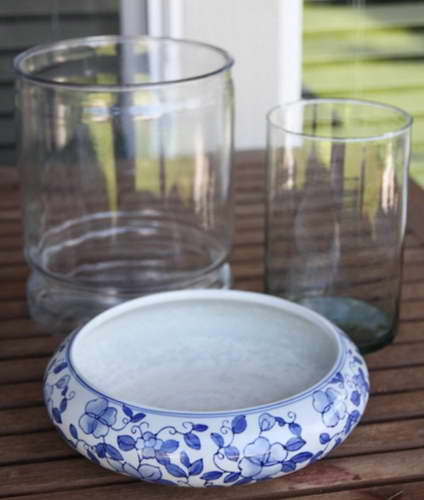

Container for distilling daffodils photo
The roots need enough space to grow normally. Use large pots: 15-20 cm in diameter and about 30-32 cm deep. These settings are suitable for growing large bulbs. For miniature varieties, they are cut in half. Better to take ceramic or clay pots, glass bowls.Wooden crates can be used.
The soil is required to be soft, but not sticky. You can purchase a special soil mixture (consists of clay, river sand, fertilizer and sawdust). Or take 2 parts of garden soil and 1 part of river sand.
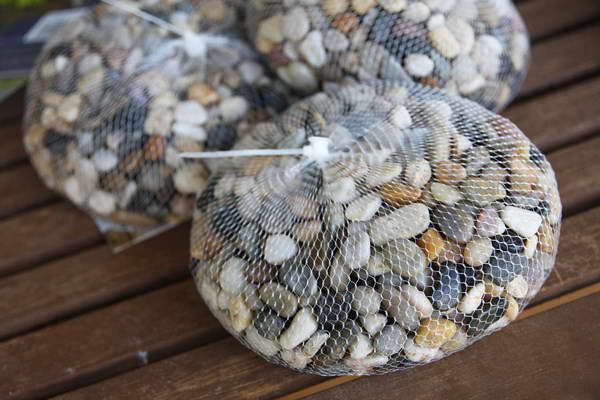

Even decorative pebbles are suitable for forcing daffodils.
For distillation for the holiday, daffodils are planted simply in decorative stones, because the bulbs have a sufficient supply of nutrients and the plants develop well provided sufficient watering.
Best conditions
The ideal temperature for flower development is between + 16-18 degrees.
Flowering usually lasts 7 to 10 days, after which the greens are cut and the bulbs discarded. However, some gardeners keep them and plant them in the spring on the site. During the next season, the bulbs will not produce greens, but in a few years they will grow to the required size for a new distillation. For this, the bulbs are grown and dug up annually.


Watering and fertilizing daffodils
- When germinating, you need to add 60 g / m2 of mineral salts (usually 30 g of ammonium nitrate and 15 g of potassium salt and superphosphate each).
- During the budding period, a second feeding is carried out at the rate of 80 g (40 g of superphosphate and 20 g of ammonium nitrate and potassium salt) of fertilizer per square meter.
- The third feeding is carried out during the mass flowering of daffodils, 10 g of ammonium nitrate and 15 g of superphosphate and potassium salt are added per square meter.
Mineral fertilizers are applied carefully and exclusively in the grooves between the rows of plantings. Do not spill fertilizer directly on the daffodils.
WATERING. In most areas outdoors, daffodils lack moisture during the growing season, so additional irrigation is usually necessary, especially during the period of budding and flowering.
The plot where daffodils are grown is watered 3-5 times during the growing season (depending on weather conditions). The norm is 20-25 liters of water per square meter. It is recommended to water the daffodils early in the morning or late in the evening when the sun has already set. With the onset of wilting of the leaves, additional watering is not needed for daffodils.
Container for planting
Narcissus roots need room for reproduction and growth, so pots or containers need to be at least 15-20 cm wide and 30-35 cm high. For small varieties that grow no higher than 15 cm, you can take smaller containers, but still with sufficient depth for rooting. It is impossible to overdo it on this issue, since excess space can harm the plant, delaying its flowering. The container can be ceramic or glass, wooden boxes are also suitable. Drainage in the bottom is required to drain excess moisture, it will prevent rotting in the onions.
Choosing daffodil bulbs for forcing
For forcing daffodils, it is important to choose the right planting material. All varieties of these flowers differ depending on how suitable they are for winter forcing. The most suitable for these purposes are daffodil daffodils (they are also called multi-flowered). They are used exclusively for forcing.
However, you can use other varieties, the main thing is to choose the largest possible bulbs (with a diameter of at least 4 cm). The weight of the planting material also matters - the bulbs should not be too light: on average, one bulb should weigh about 60 g (more can be).
The exception to the rule will be undersized varieties of daffodils. Their bulbs are not very large, but they are also suitable for distillation and will look very good in a pot.
When choosing bulbs for forcing, you should look for signs of disease and signs of damage. If you take the planting material from a flower garden, after digging the bulbs should be dried and stored until autumn at a temperature of about 17 ° C.
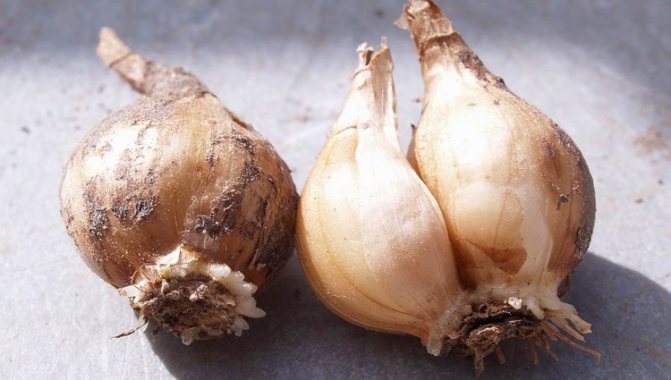

Forcing tulips, hyacinths and daffodils by 8 March. Recommendations + video
Let's not forget that the Christmas holidays will be followed by March 8th.Women are eager to receive spring flowers as a gift on March 8th. To have time to grow flowers for the women's holiday, you need to start immediately.
Imagine: blizzards and blizzards are raging outside the window, the whole world is wrapped in a snow blanket, and tulips, hyacinths, daffodils, crocuses are blooming on your windowsill ...
Have you presented? Do you want to grow spring flowers at home? Then it's time to talk about how to make your wish come true. This is not a simple matter, but everyone is able to cope with it!
For blooming tulips, daffodils and other bulbous flowers in winter, distillation is used.
What is distillation?
This is a series of activities that induce plants to bloom at an unusual time for them: in winter or early spring.
Which bulbous plants are suitable for forcing?
There is a lot to choose from: small-bulbous - muscari, snowdrop, crocus, pushkinia, chionodox, blueberry. From bulbous - tulip, hyacinth, daffodil. Have you chosen a plant for distillation? Then let's move on to the rules. And if you have any questions while reading, be sure to ask them in the comments - I'll tell you everything I know.
Rule # 1
Bulbs must be forcing
What does it mean? For plants, the bulbs of which will be used for forcing, special care begins in spring (for example, tulips are not allowed to bloom by cutting or plucking the buds). They are regularly watered and fertilized according to all the rules of agricultural technology. This preparation allows the bulbs to accumulate the maximum amount of nutrients. The planting material intended for distillation is stored, strictly observing the temperature regime - special for each species. If you are an ordinary amateur gardener, and not a fan of forcing bulbs, it will be difficult to comply with all the conditions. Therefore, for beginners, I recommend buying ready-for-forcing bulbs from good garden centers.
Rule # 2
A competent choice of a variety is important for success.
It is imperative to consider: each of the varieties of plants intended for forcing has a certain cooling period. In tulips, it is from 11 to 19 weeks: Gavota (Triumph) - 11-13 weeks; Bergamo (Triumph) - 13-14; Aladdin (lily-colored) -14-15; Blue Diamond (double late) - 15-16; Red Empression (Darwin hybrids) - 15-16; Akela (simple early) - 16-17; Arma (fringed) - 17-18; Golden Oxford (Darwin's hybrids) - 18-19.
In hyacinths, the cooling period is shorter: Anna Marie - 10-11 weeks; Atlantic - 10-11; Blue Giant -11-12; Garnegie - 11-12.
Rule No. 3
Plants need to create comfortable conditions for growth.
Rule No. 4
Observe the technology of distillation is strictly obligatory!
Rule No. 5
Forcing crops need additional lighting Light Bulb
Choosing a variety of daffodils for distillation
To get beautiful flowers that will bring joy in winter, by the target date, you need to do some work. It should start with the choice of a plant variety. The most suitable for this purpose are daffodils of the multi-flowered (tacetate) species; they are used mainly only for forcing in winter.
You can use almost all types of daffodils - these are terry with one or more inflorescences from white to red shades, small-crowned with small inflorescences up to 8 cm, large-crowned single up to 50 cm in diameter with an inflorescence of 12 cm or more, garden tubular.
The best varieties are:
- Rembrandt - medium early tubular stem height up to 30 cm flower tone yellow.
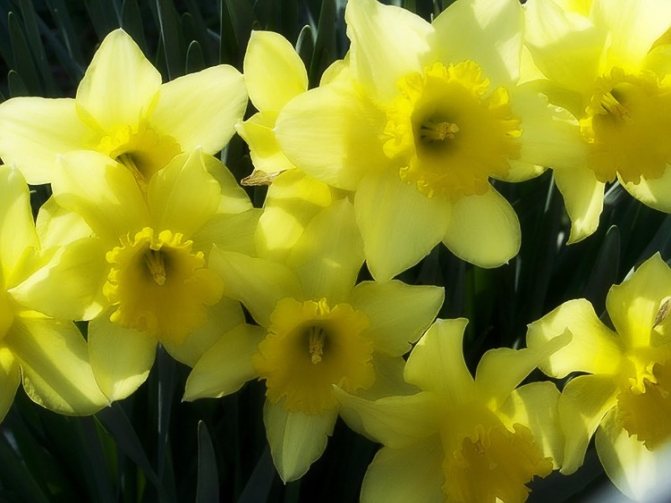

- Mawit Hoot - medium early, tubular, plant height 35 cm, large white flowers.
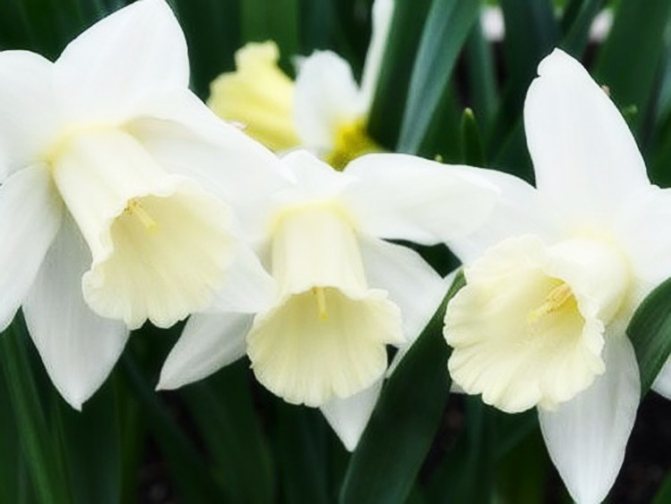

- Carpton - medium early, large-crowned grows up to 40 cm, flowers are light yellow.
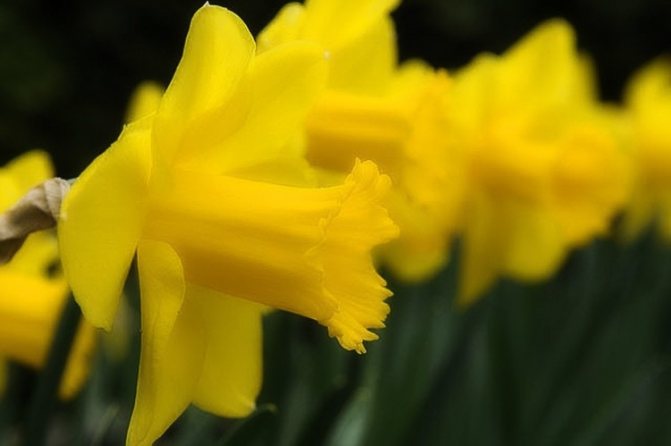

- Dutch Master - tubular, golden yellow flowers.
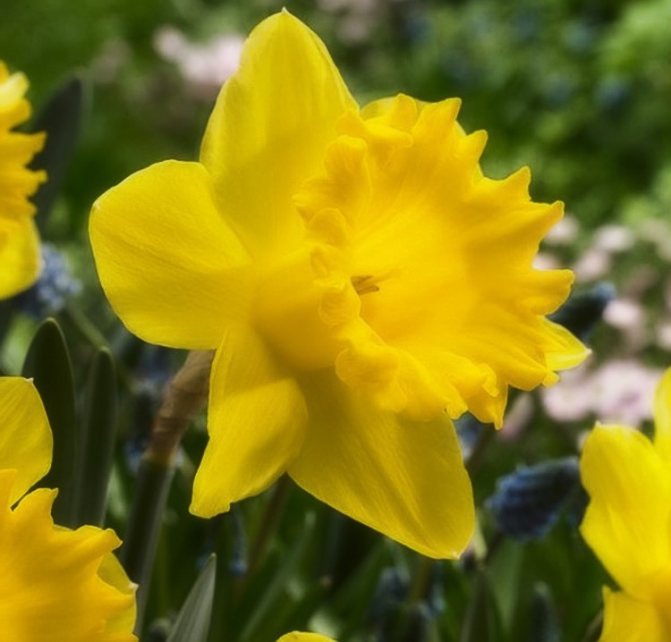

- Barrett Browning - small-craned, grows up to 35 cm, white with an orange crown
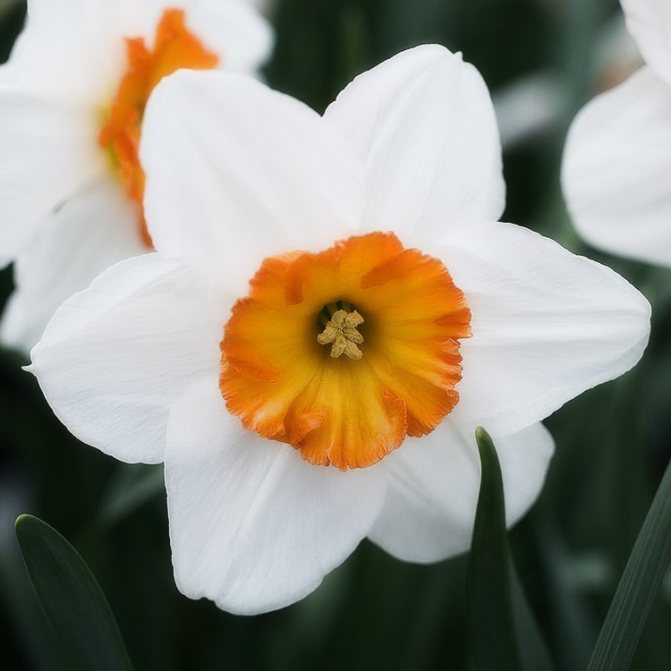

- Golden Harvest - early, tubular, 40 cm high, large yellow flowers.


Selecting a variety for distillation
To get beautiful flowers that will bring joy in winter, by the target date, you need to do some work.It should start with choosing a plant variety.
The most suitable for this purpose are daffodils of the multi-flowered (tacetate) species; they are used mainly only for forcing in winter.
You can use almost all types of daffodils - these are terry with one or more inflorescences from white to red shades, small-crowned with small inflorescences up to 8 cm, large-crowned single up to 50 cm in diameter with an inflorescence of 12 cm or more, garden tubular.
The best varieties are:
Rembrandt - mid-early tubular stem height up to 30 cm flower tone yellow.
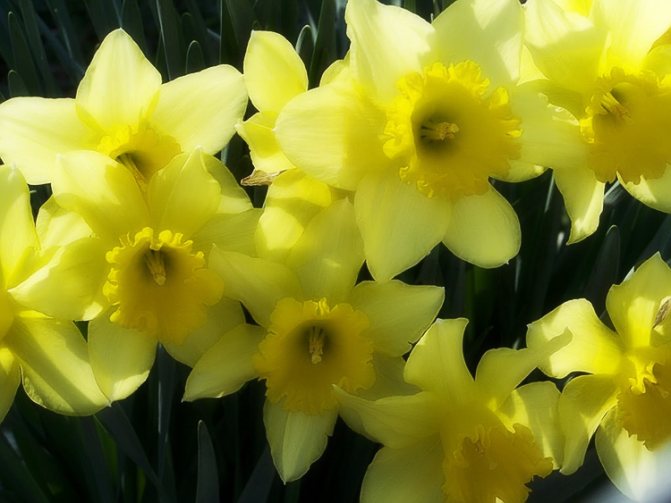

Mawit Hoot - medium early, tubular, plant height 35 cm, large white flowers.
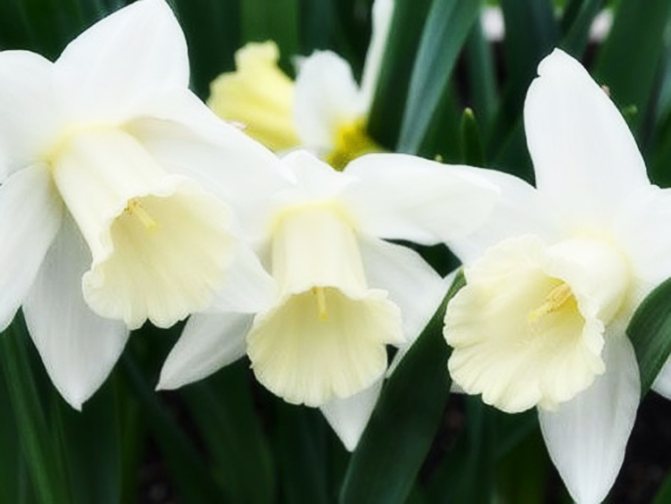

Carpton - medium early, large-crowned grows up to 40 cm, flowers are light yellow.
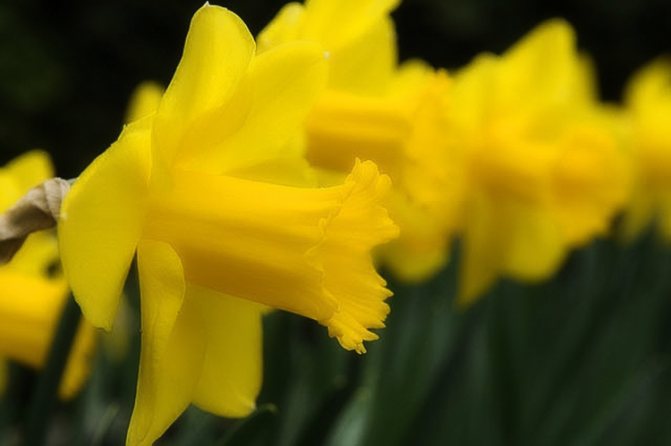

Dutch Master - tubular, golden yellow flowers.
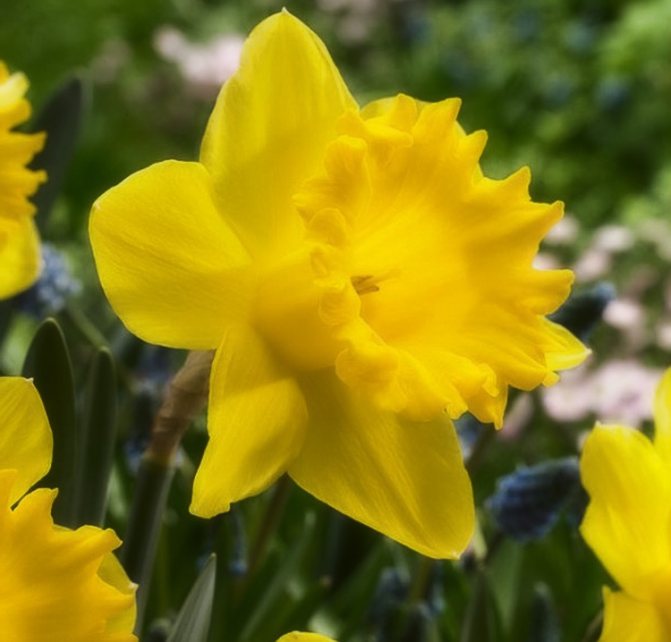

Barrett Browning - small-craned, grows up to 35 cm in color, white with an orange crown.
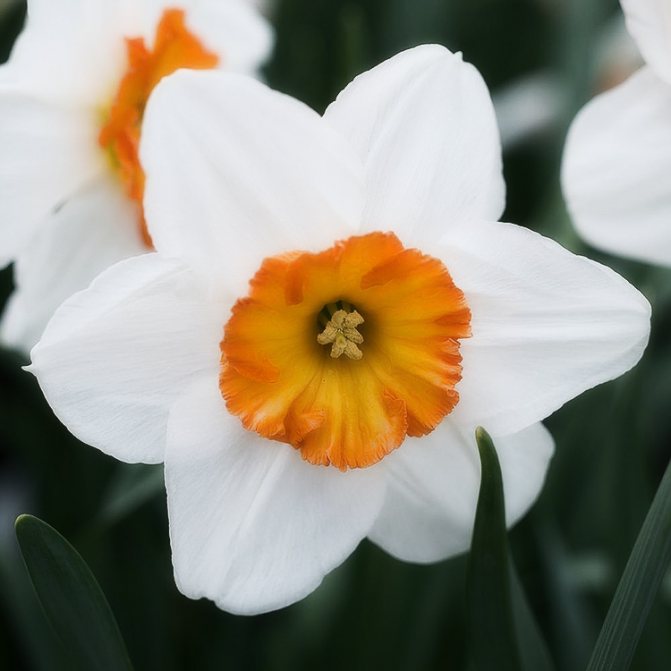

Golden Harvest - early, tubular, 40 cm high, large yellow flowers.
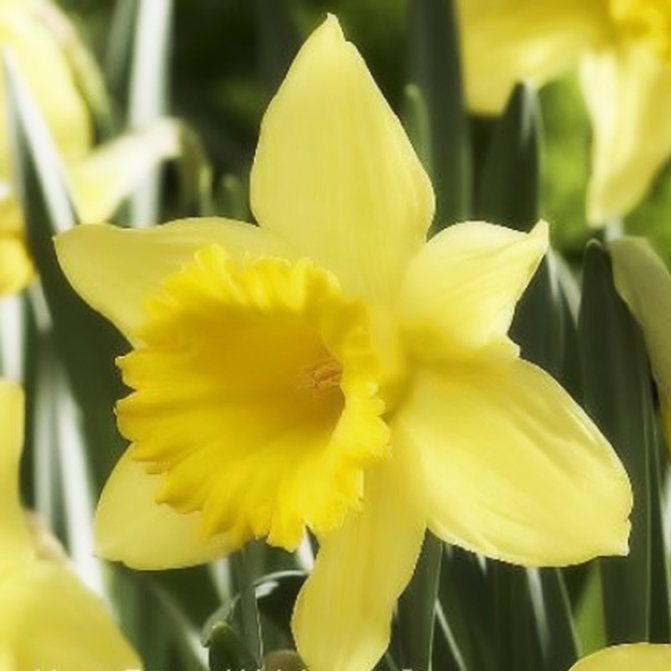

G ? ATS ? NTY
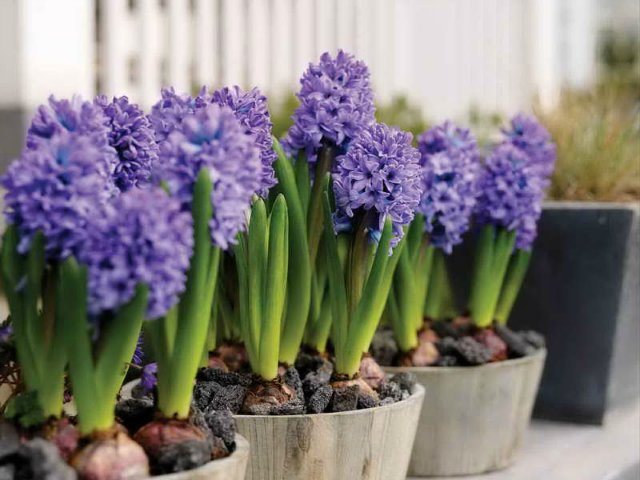

Hyacinth is good not only in a flower garden, bouquet, but also in winter forcing. For growing in an apartment, use pots, bowls or boxes. ? X is filled with soil, consisting in equal amounts of river sand, sod land and peat. If all these components are not available, you can get by with a mixture of river sand and garden soil, or even sand alone.
Before planting, the bulbs are stored in a dry, dark place at room temperature.
They are planted no earlier than November. Broken shards, gravel or expanded clay are placed at the bottom of the pot, then 1-2 cm of river sand is poured and filled almost to the brim with soil mixture, which is watered abundantly. The bulb is pressed into the ground with its bottom, sprinkled on top so that only its upper part is visible, and the ground around is tightly squeezed. After planting, the top of the bulb is at the edge of the pot and 1.5 cm above the soil. The planted bulbs are covered with paper caps on top and placed in a shaded cool room for 40-45 days so that the plants form a well-developed root system. You can dig the pots into a greenhouse or trench by laying a film under them, and covering them with insulating material on top. Are they kept in the basement or even in the refrigerator? The main thing is that the temperature there is at the level of 6-9 ° C, since at a lower or higher level, root formation slows down.
The soil in the pot during this period must be kept moist.
In well-rooted bulbs, the roots are densely entwined with a clod and sprouts appear. As soon as they reach 8-10 cm, the plants are transferred to a warm room and gradually accustomed to light, removing the caps for several hours. Then they are removed completely and watering is increased.
During this period, it is important to observe the temperature regime. For 5-6 days, plants need a temperature of 17-18 ° C, and then it can be increased to 22 ° C. Moreover, by adjusting the temperature, you can control the duration of flowering yourself. So, at 10-12 ° C it can last 20-25 days, at 20-22 ° C only 15-18 days. Hyacinths usually begin to bloom three weeks after being brought into a warm room.
Growing conditions
We will find out what conditions this flower needs and where in the house it is better to put a pot of daffodil.
Location and lighting
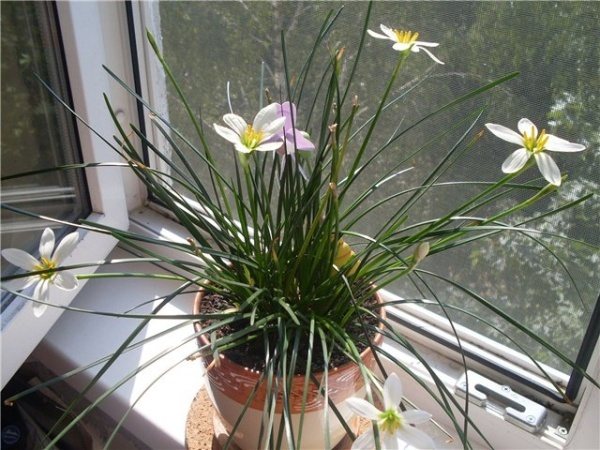

A daffodil can grow in the shade, however, it will bloom better in the sun. Keep this feature in mind when choosing a place for this plant. The more abundant the lighting, the longer the flowering period: however, you should not keep the daffodil in the pot in direct sunlight.
Temperature and humidity
The flower is completely picky in relation to temperature, it can be successfully grown even in relatively cool rooms. However, higher than + 15-18 degrees, it is not worth raising the temperature in a room with growing daffodils: in this case, they may refuse to bloom.
The flower is more demanding to the level of air humidity: a dry atmosphere does not suit it.Place the plant at home away from working heating radiators. It is advisable to place a container filled with water next to the pot.
Soil composition
In gardening stores, you can buy a special substrate for daffodils - it is optimal for growing them indoors. Note that you can plant a flower in garden soil taken from your own plot.
To make the substrate more nutritious and friable, it is recommended to add sand, dry clay or sawdust to it. The structure of the substrate should be crumbly, loose, light. Dense soil is not suitable for the plant, since it cannot provide sufficient air access to the roots. In such conditions, the plant is often affected by a fungus.
Planting domestic daffodils can also be done in perlite, small decorative stones. This technique is often used when it is necessary to receive flowers for the holiday - March 8, for example. There is enough nutrition in the bulb, and it develops quite well with regular watering.
Pot selection
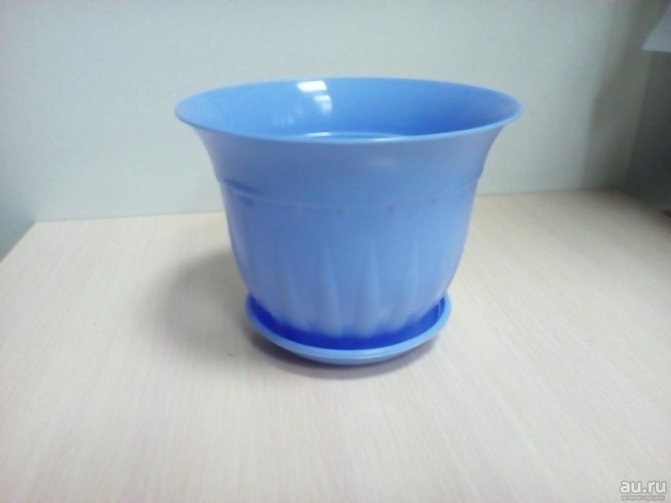

Choose a small pot (about 15 cm), 10-13 cm wide. Several onions can be grown in one container, if they are small. As for the material, it is better to take clay or ceramics.
If the variety is miniature, it can be grown in a small capacity: less than one and a half to two times the standard one. If you want to grow a whole lawn of daffodils at once, you can take a shallow wooden box as a container.
Preparing the substrate for planting
The key to the success of forcing is soil. It must be breathable, moisture-absorbing and neutral.
There are several options for mixtures for growing daffodils in the winter:
- the optimal substrate consists of compost, garden soil, river sand, in a ratio of 1: 2: 1 with a possible small addition of wood ash;
- a mixture of sand with peat;
- peat and expanded clay - 2: 1;
- vermiculite;
- river sand, garden soil, sawdust - equal proportions.
Lack of potassium in the substrate can lead to defects such as lodging stems. Lack of phosphorus and nitrogen will affect the quality of the bulb, its further use.
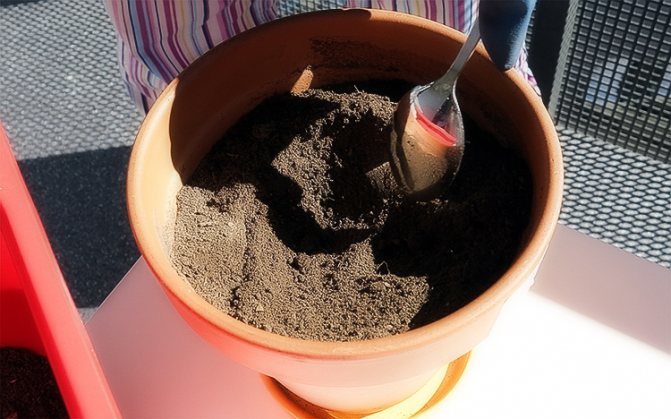

Do not use soil from greenhouses, greenhouses and poorly rotted manure for distillation - to guarantee the prevention of the development of diseases.

